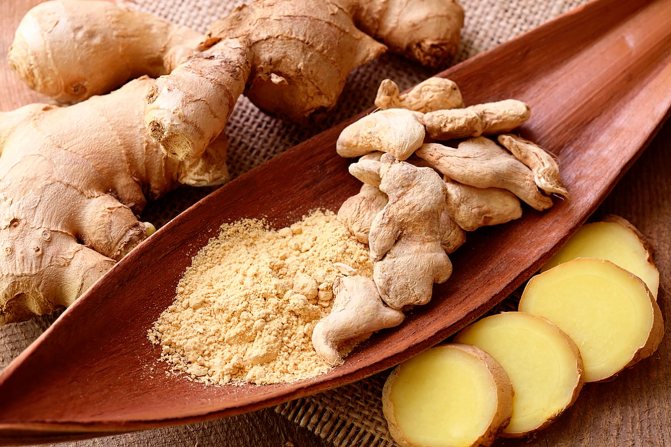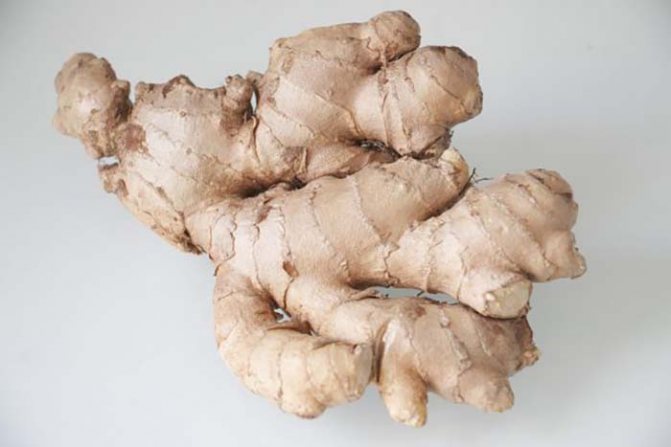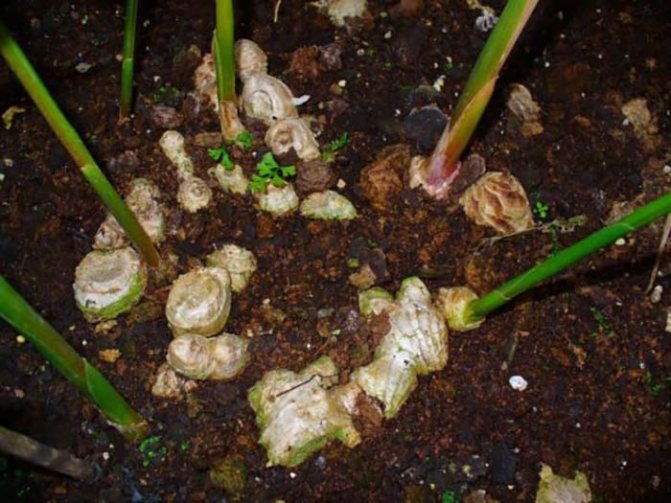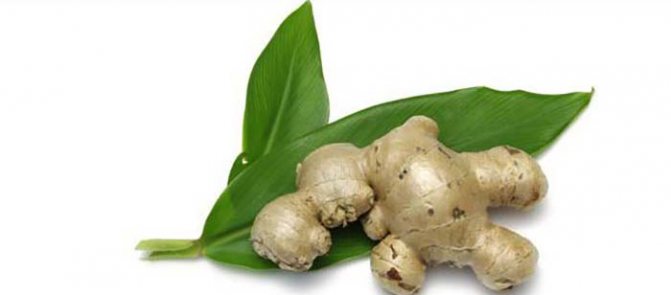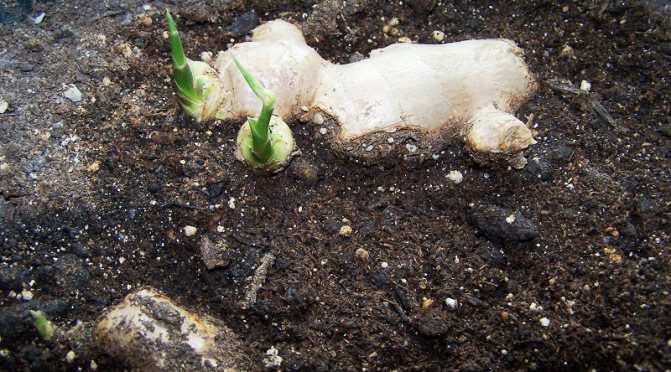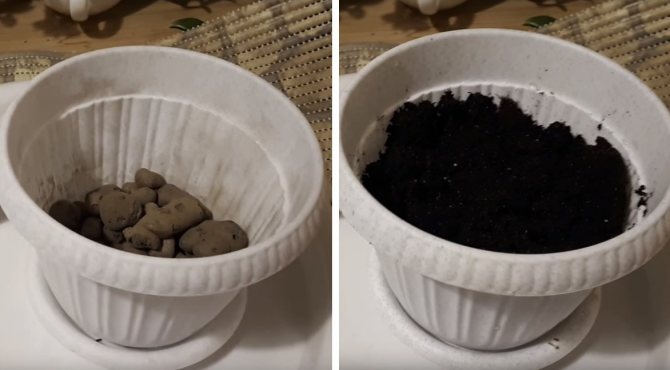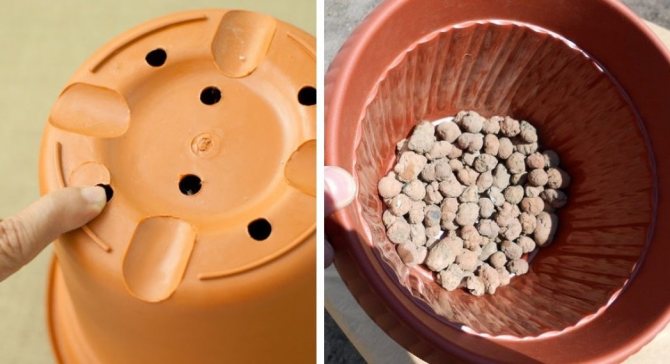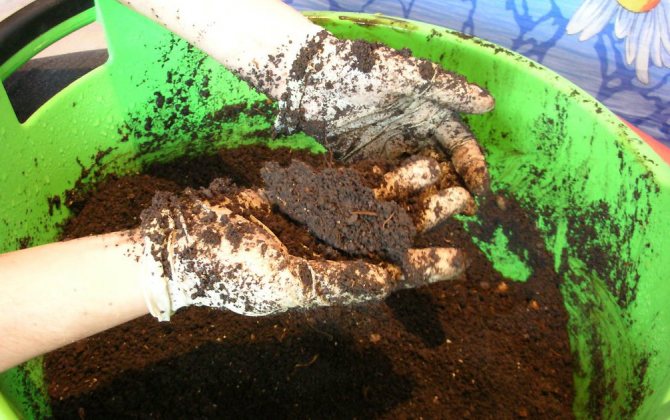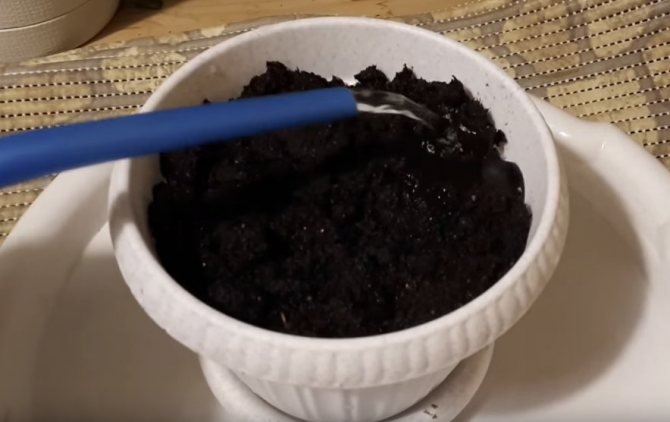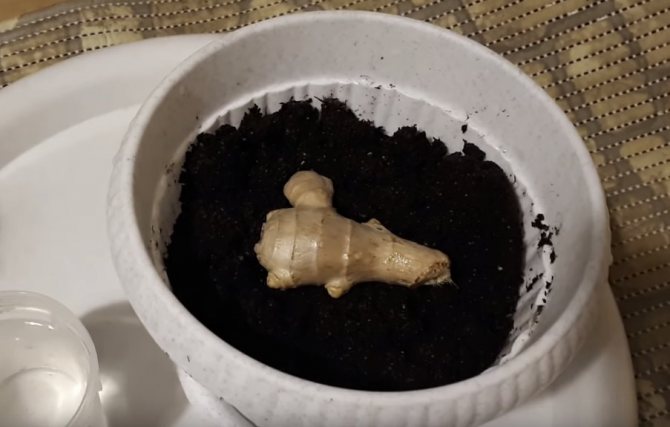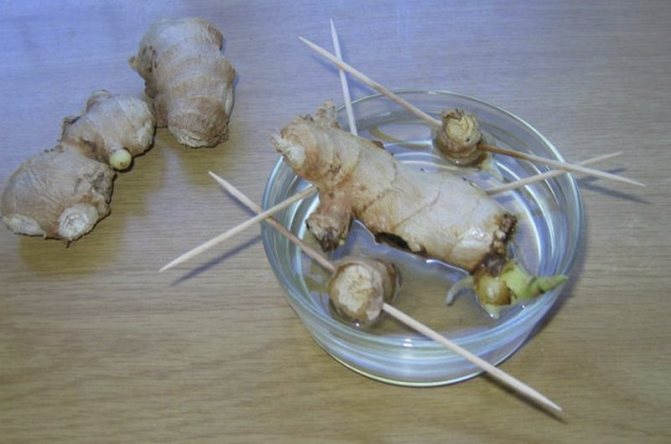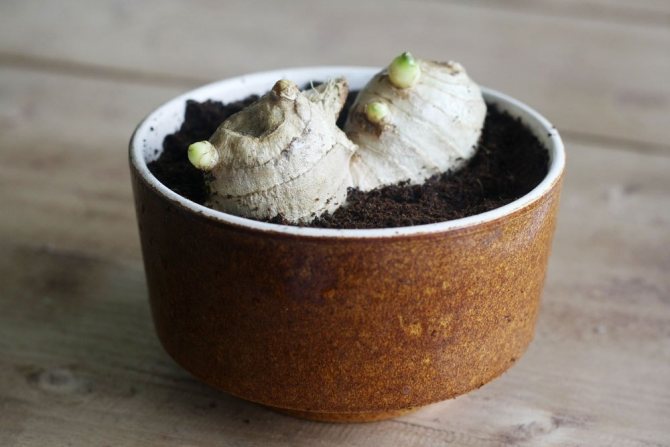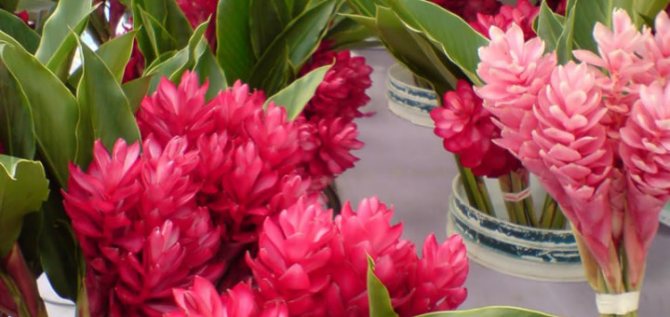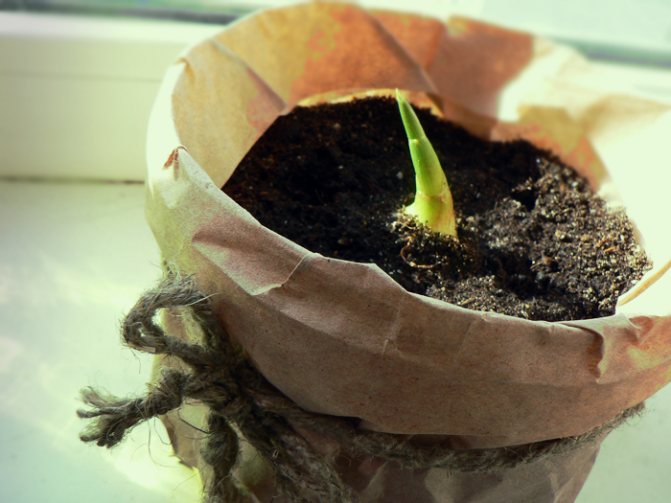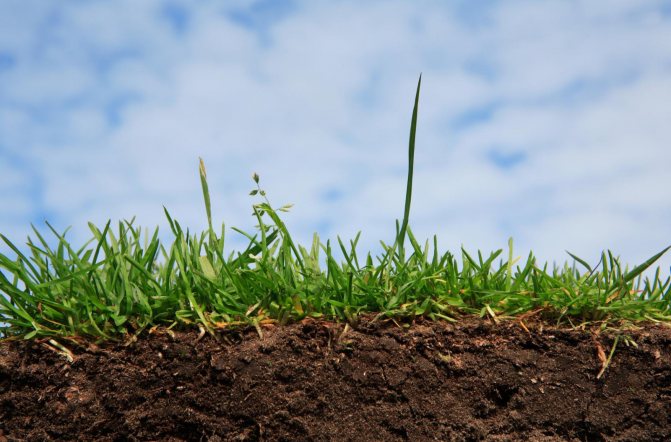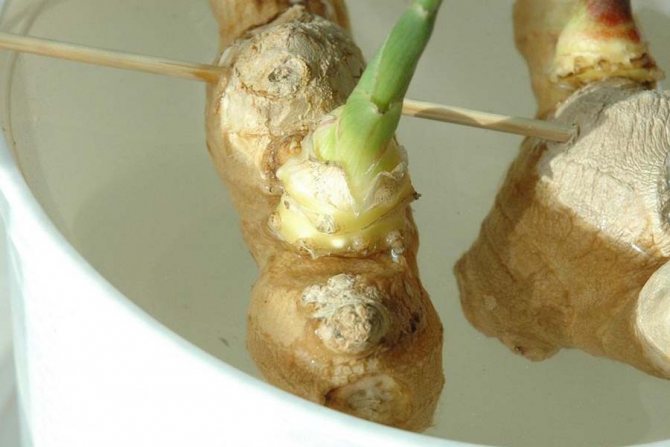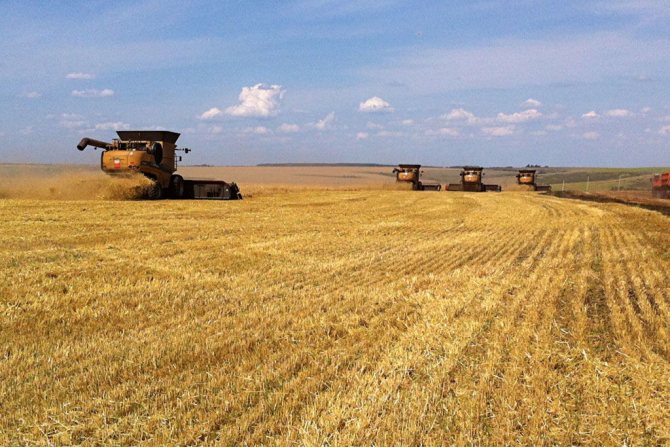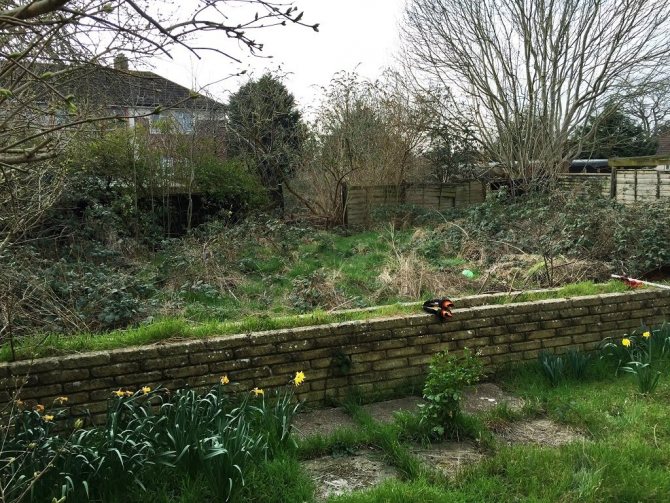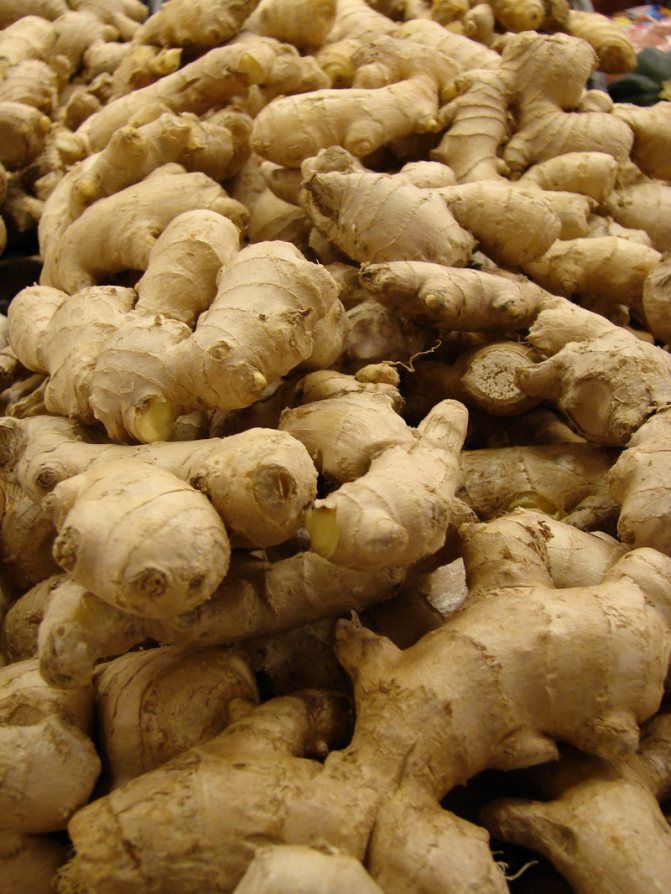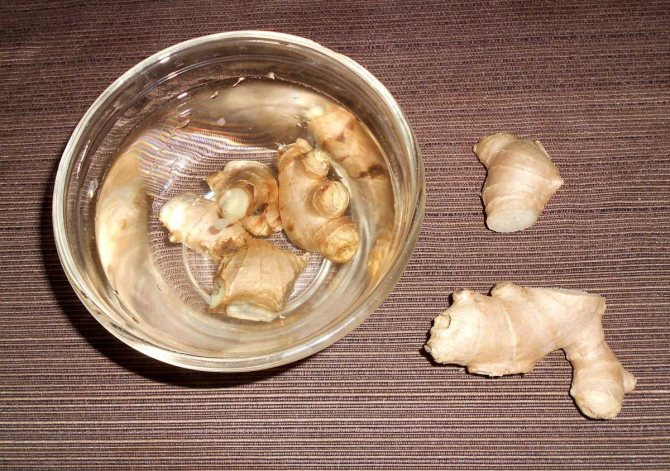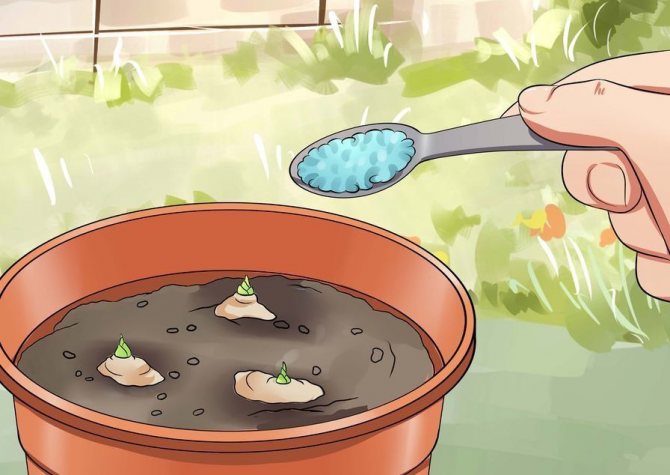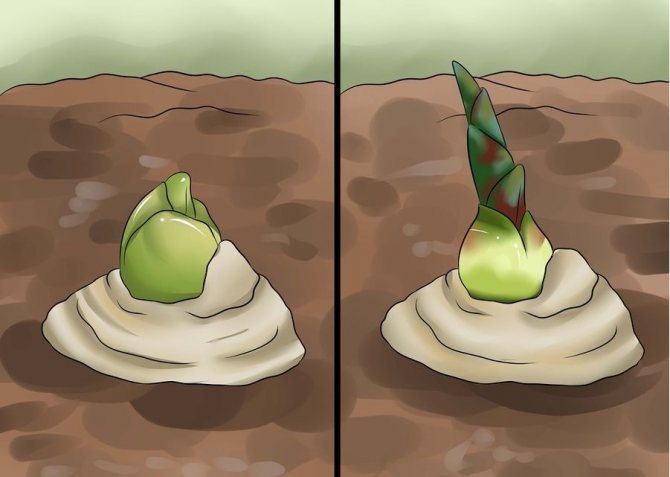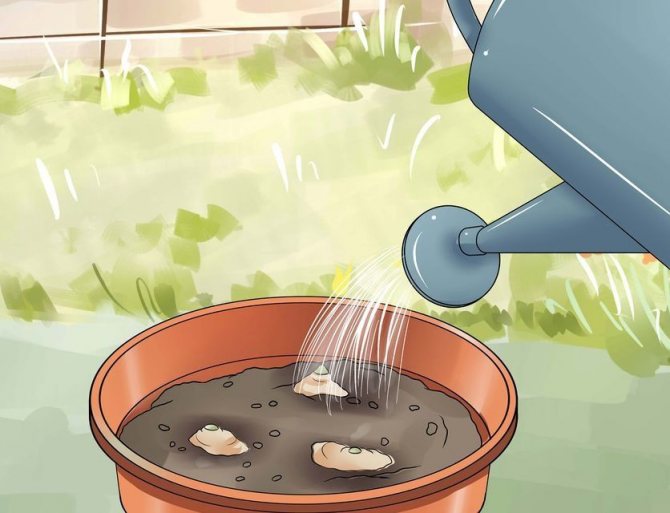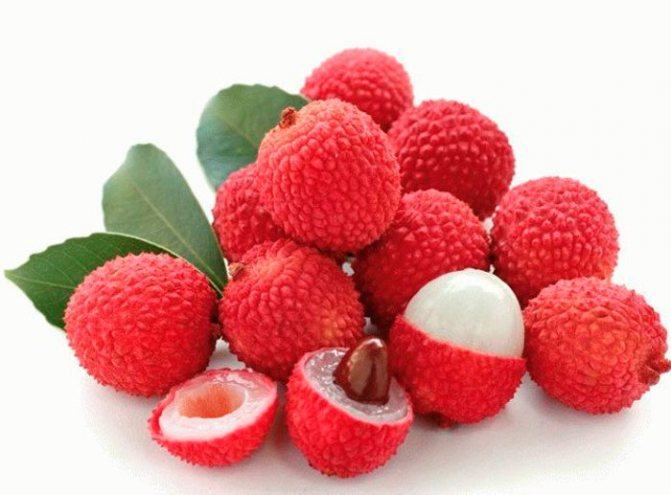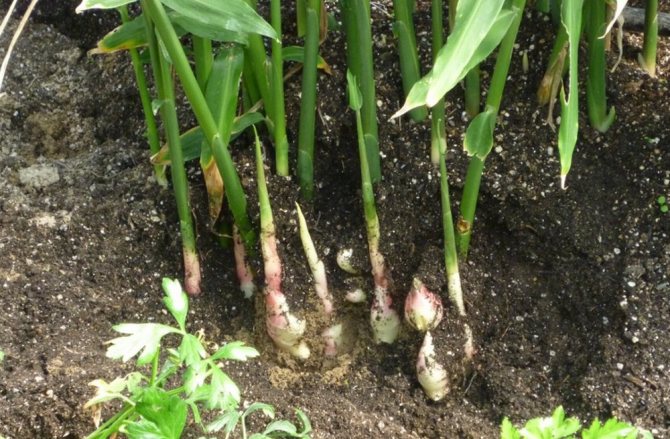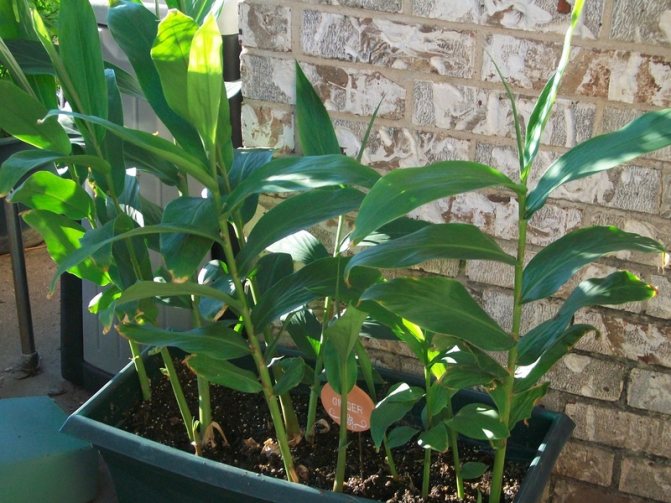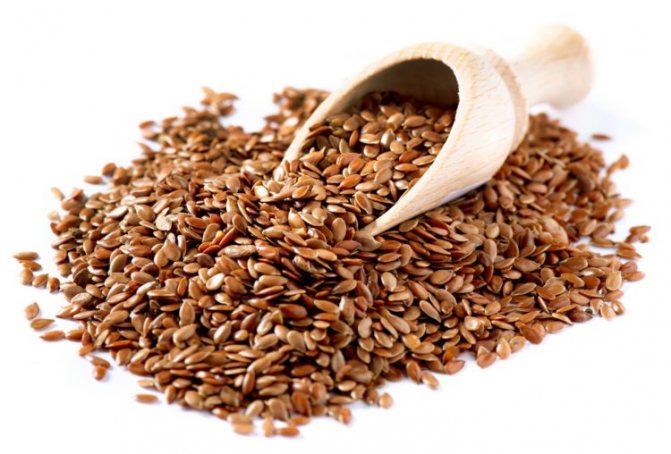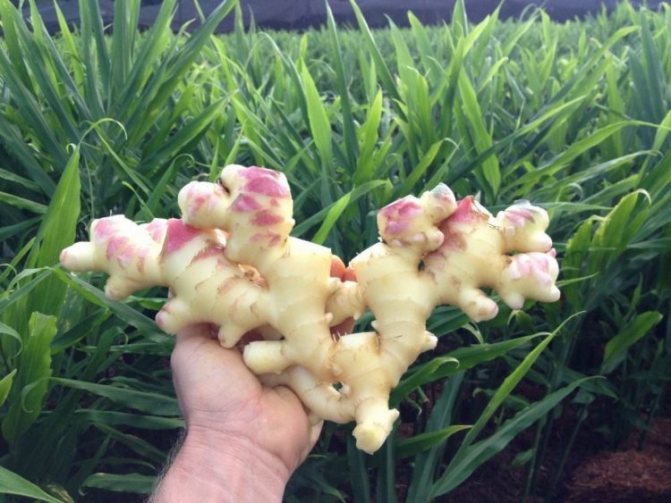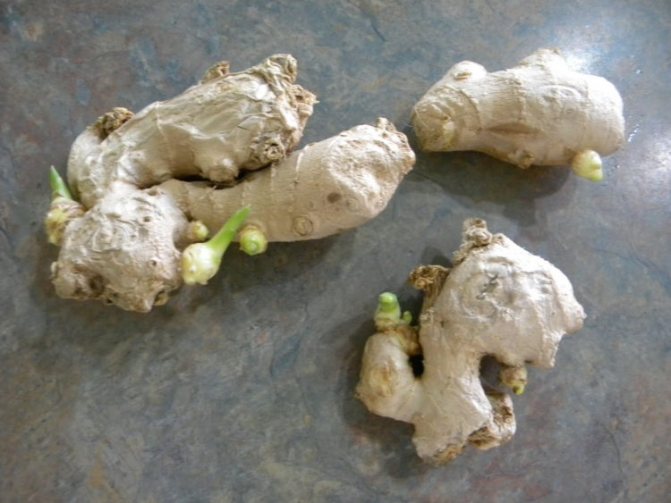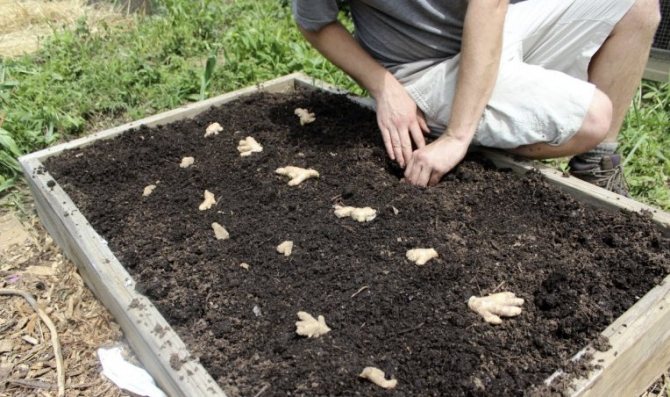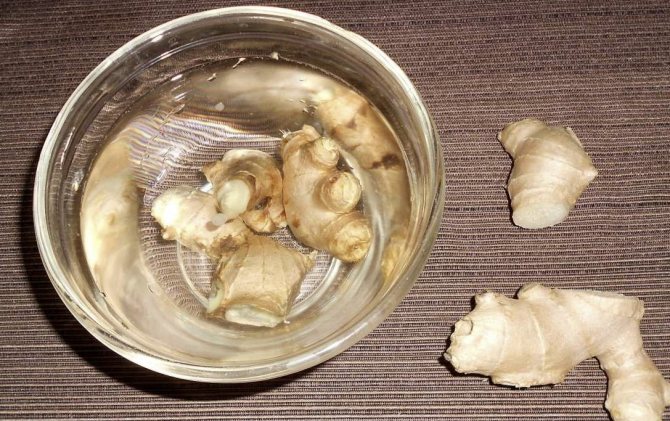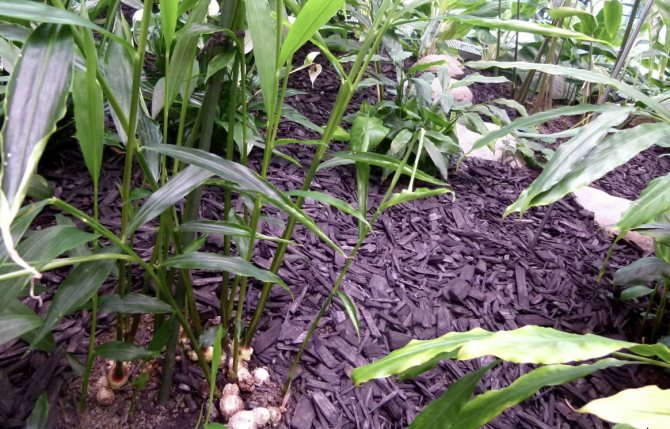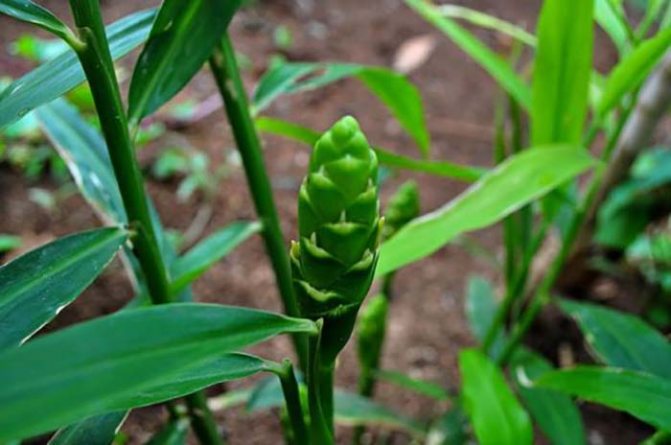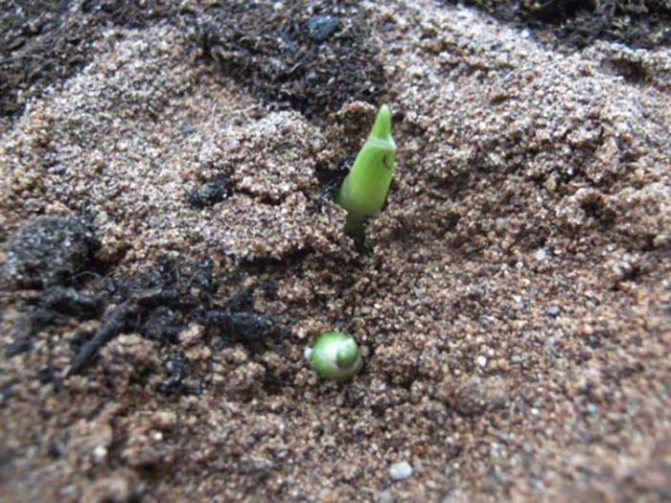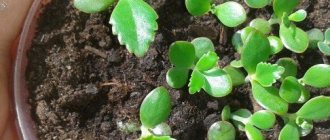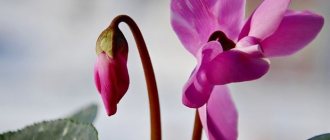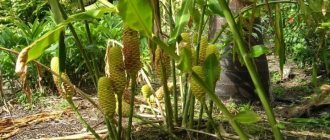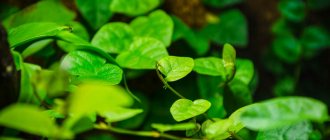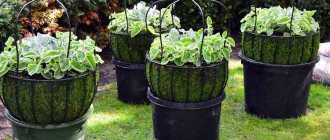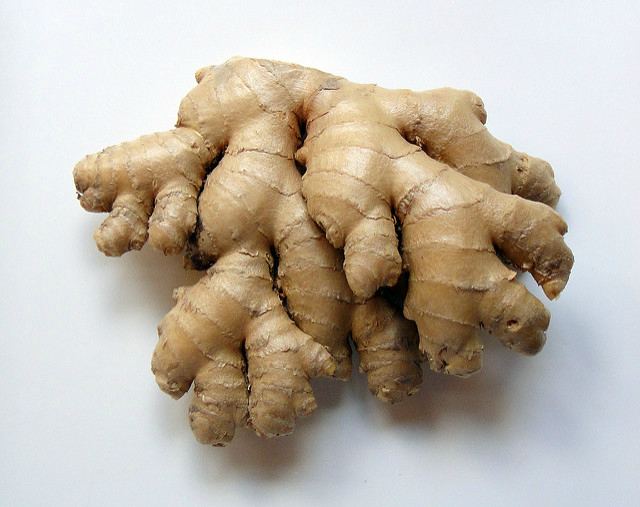
Nothing beats the bright and juicy scent of homemade ginger. Despite the fact that this culture is a child of the tropics, it is quite possible to grow it at home. Dark green graceful leaves will be an excellent decoration for a glassed-in balcony or room, and lemon-yellow "roots" will make New Year's baked goods truly original.
The use of ginger in food
Ginger root (ginger) is used in food primarily as a condiment. It appeared in our stores relatively recently, and many housewives still do not know whether it is worth using it in various dishes, and how to do it correctly.
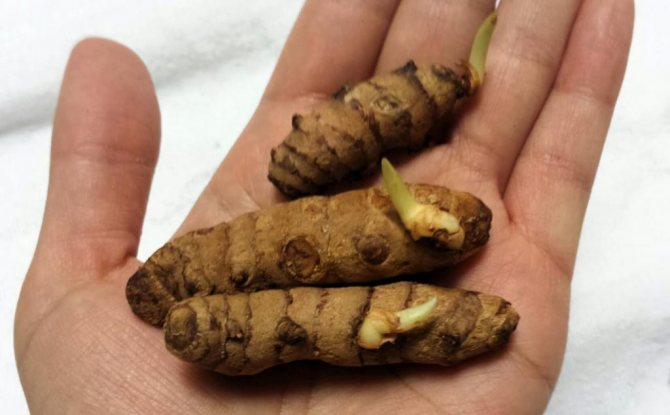

Meanwhile, ginger, which has a pleasant bitterness and a delicate aroma similar to lemon, can decorate many dishes, making their taste more exquisite.
Sometimes it happens that, having brought home a ginger root, the hostess does not use it immediately. And when after a while his hands reach him, it is found that the root has sprouted. And then the question arises: if the ginger has sprouted, can it be planted? The answer is unequivocal - of course you can. You just need to do it right.
Useful properties and uses of ginger
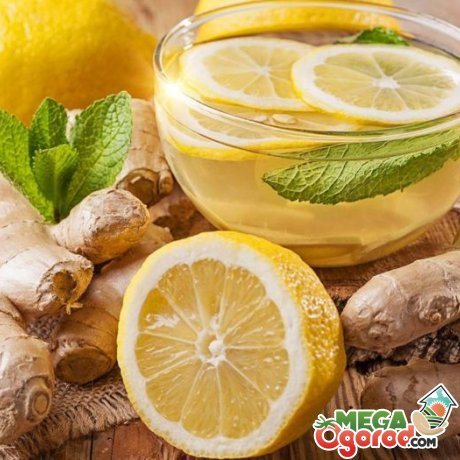

"Horned root" is freely available in any supermarket, as well as in specialized stores. It is distributed both dried, chopped and fresh. In the latter option, it is much more useful to acquire - all vitamins and minerals are preserved.
- Ginger can be used to make tea, prevent illness, or help cure colds.
- The rhizome contains a large amount of vitamin B3. Eating the crushed pieces increases the local immunity of a person.
- Improves mood, relieves depression.
- It is used to increase tone and potency for men.
- It has a beneficial effect on the hair - it charges with shine and beauty.
- The face becomes fresh and youthful - wrinkles are smoothed out, the color of the skin improves.
- Spice improves metabolism in the human body.
- Relieves fatigue, relieves migraines, generates the production of physical strength, increases efficiency.
- Overweight people, taking tea in the morning, lose calories.
Has limitations for use. Not for people with stomach ulcers, diseases associated with the intestines and colitis. Not recommended for pregnant or breastfeeding women.
Thus, ginger is a medicinal plant that can prevent many diseases and improve overall well-being.
More information can be found in the video:
Description of the plant
Ginger is a perennial tropical plant native to Asia. In appearance, it is similar to the sedge we are accustomed to, but it blooms with very beautiful flowers that resemble an orchid. Narrow, long, pointed at the ends of the leaves of ginger are painted in a pale green color. In the wild, its stem, covered with small scales, can grow up to two meters. At home, the culture will not exceed sixty centimeters. Often there is a situation in everyday life when ginger has sprouted. How to plant a culture? This is a fairly straightforward procedure.
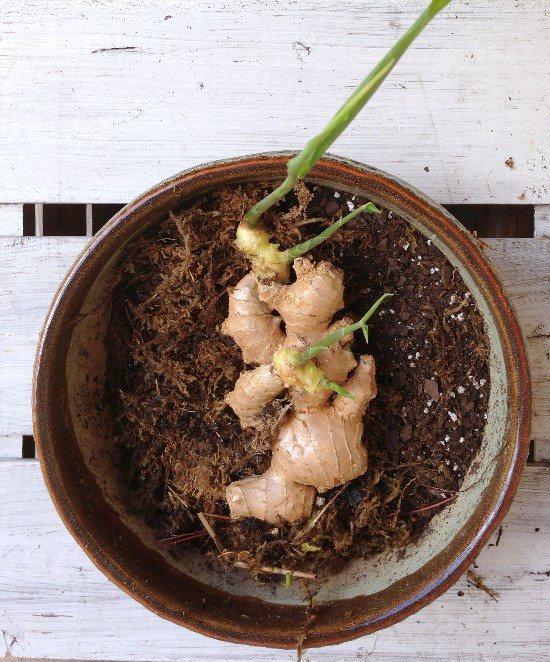

In addition to its beautiful appearance and excellent taste, the plant has a lot of healing properties and is successfully used to strengthen immunity, as well as prevent and treat cardiovascular and gastrointestinal ailments. Therefore, knowing how to plant sprouted ginger at home is very helpful.
Ginger - external data
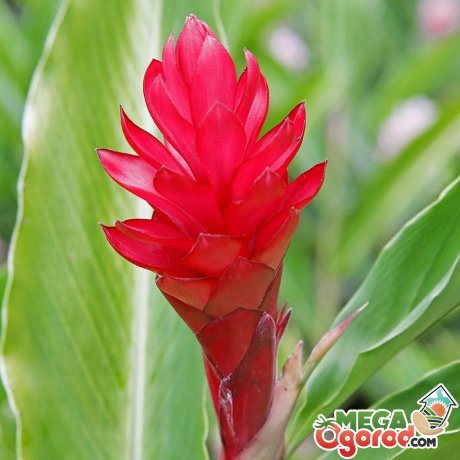

Ginger is a slow-growing perennial plant. It can be grown both for decoration and for consumption as a spice. Earlier "horned" was used in baked goods (gingerbread, cookies), in tea, to give the dish an exotic taste. The flower is native to Western India, also native to Southeast Asia. From the family of turmeric, lily, cardamom and tulips.
Outwardly, the plant does not stand out much - a grass similar to sedge. Grows upward, can reach 100 cm. The leaves are large, leathery, elongated. Erect inflorescences, like spikelets of wheat, come straight from the root, can shoot up to a height of 40 cm. Green shoots, when touched, emits a citrus aroma.
The flowers of the shrub stand out in different colors - yellow, purple, white or pink with lilac edging.
Flowering occurs in mid-April and lasts until the end of August. The buds are thrown out only in the third year of life. Has creeping rhizomes located on the surface. In a wide pot they grow up to 1 meter wide. Loves a lot of sun. Feels great on southeastern or southwestern window sills.
There are two types of storage processing:
- White - the top skin is removed. It undergoes a special chemical treatment and loses some of its nutrients.
- Black - not cleaned, but poured over with boiling water. A pungent taste and a pungent odor remain, all useful qualities are preserved inside the root crop.
Thus, the plant stands out among other subspecies with a memorable appearance. It is grown not only for decorative purposes, but mostly for food.
Why grow?
So, the owners have sprouted ginger. Whether it is possible to plant him is already known. Now you just need to decide for what purpose such a procedure will be performed.
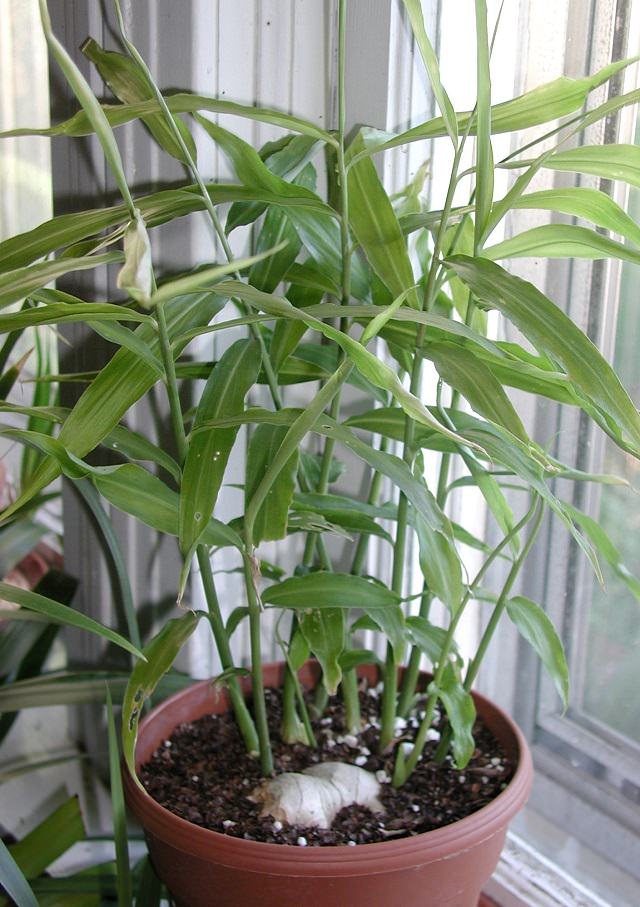

You can do this to obtain valuable rhizomes, or you can do it for the sake of magnificent flowers, which, undoubtedly, can decorate any garden. The cultivation technology will depend on this.
How to grow ginger on a windowsill, balcony?
West and east windows are well suited for growing on a windowsill. Shading is required on the south window from the direct sun. In summer, you can place the plant outside the window or take it out to the balcony or loggia, where there is more light and fresh air. Some flower growers take the pot out into the garden in the summer, sometimes they drop it in and put it under the trees. In the air, plants become stronger, the formation of "root tubers" is faster. In the fall, they bring it into the house and again place it on the windowsill, balcony, loggia. Preventive treatment against pests when returning to the premises is required.
Preparing for landing
Before planting the ginger, it is cut along the branches of the processes into several pieces about two centimeters in size. Each such piece should contain two or three buds.
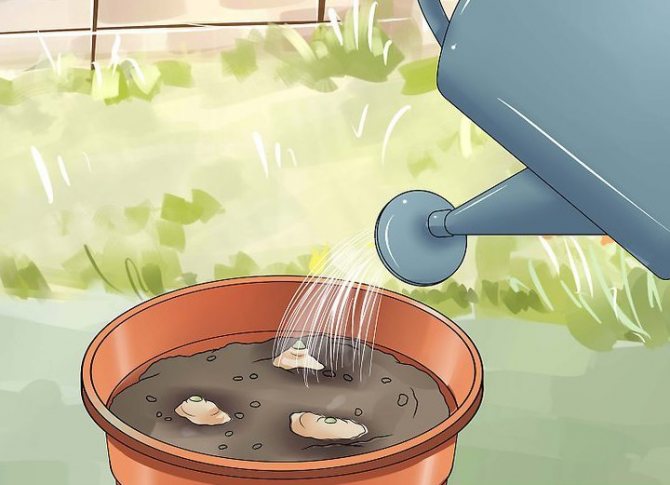

Places of cuts are treated with ash or activated carbon. The choice of the container in which the prepared material will be planted depends on the purpose of growing the plant. If ginger is grown to obtain a rhizome, it must be planted in a wide, shallow box, since its roots do not grow in depth, but horizontally.
If you intend to use ginger as an ornamental plant, you should pick up a small pot so that the plant directs all its forces to the development of not the rhizome, but the stem, leaves and flowers.
Reproduction
Ginger - what is this plant and where it comes from
Ginger is propagated vegetatively and with the help of seeds.Each method has its own characteristics and takes a lot of time. The vegetative method is less laborious, the cultivation of seeds is a more complex and time-consuming process.
Root tubers
Several plants can be obtained from 1 root tuber at once, for this it is divided into parts 5-7 cm in size. Each piece must have at least 1 bud-eye. Each part is planted in a separate container; several pieces can be placed in a wide flowerpot at once. How to plant ginger correctly in order to propagate it:
- Places of cuts on the roots are treated with coal powder to prevent rotting;
- A drainage layer is poured into the flowerpot, on top of which fertile soil is poured;
- If the roots are planted in one pot, they are laid out at a distance of 5-8 cm from each other, buds up. From above, the pieces are sprinkled with earth so that they are buried no more than 2 cm;
- The land is irrigated with clean water and the pot is covered with a film. The next day, the ground around the roots is loosened, ventilated daily for 15 minutes.
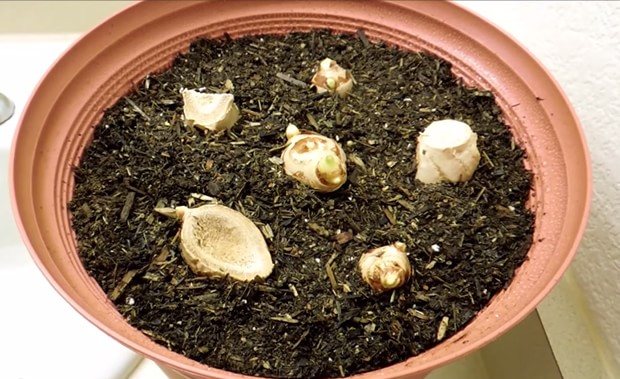

Cut tuber
Growing from seeds
Finding ginger seeds is not easy, they are rarely found on sale, and you can order them online. Collecting seeds on your own is almost impossible. At home, ginger can bloom in 2-4 years if properly cared for. For a number of reasons, flowering may not occur.
If the seeds are already available, all that remains is to germinate them. How to do it:
- Prepare nutrient soil on your own or purchase ready-made, pour it into a container for germinating seeds. Any wide, shallow container will do. It is not necessary to fill the drainage layer, after a couple of weeks the sprouts will be transplanted;
- Seeds need to be spread out on top of the ground, they do not need to be buried or buried in the ground;
- The soil is sprayed with a spray bottle to keep it moist but not soggy. From above, the container is tightened with a film or covered with glass, placed in a warm, semi-shaded place without direct light.
The sown land is moistened and ventilated every day. After 2 weeks, the first leaves should germinate. When there are several of them, the plant can be transplanted into separate pots.
Growing from seeds takes a lot of time, the rhizome will be fully formed only after 3-4 years. This option is more suitable if the ginger is grown as an ornamental home plant rather than for harvesting.
Priming
If ginger sprouted, how to grow it yourself? An important issue is the choice of a suitable soil. For planting, you can use wet moss or soil, which is used by gardeners in the process of cultivating vegetables.
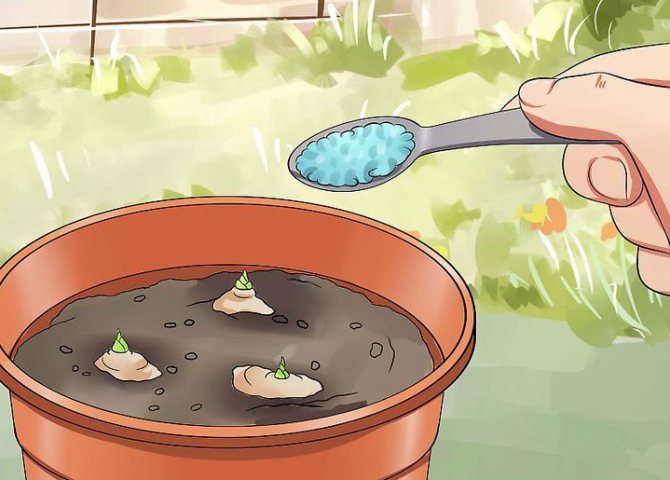

You can make your own planting mix by mixing three parts of peat with one part of clay. Some flower growers advise using a soil mixture prepared from equal parts of humus, sand and deciduous humus for planting.
Preparatory activities
For optimal and rapid growth of ginger, it is necessary to recreate the conditions of its natural environment. In regions with cold winters and sharp periodic temperature changes, the plant can only be grown in a greenhouse or living room.
In tropical and subtropical latitudes, ginger can be planted in the garden as a potato. In order for the root to grow and give a good harvest, it must be selected, processed and planted in a certain way, creating certain conditions for its growth.
Prerequisites for growth:
- high humidity;
- constant presence of heat;
- diffused light 12 - 15 hours a day;
- nutritious soil.
Landing
When the ginger root has sprouted, how to plant such a plant? At the bottom of the container chosen for this, drainage is placed - pieces of foam or expanded clay. Lay moss on top of it or fill in soil so that the pot is two-thirds full.
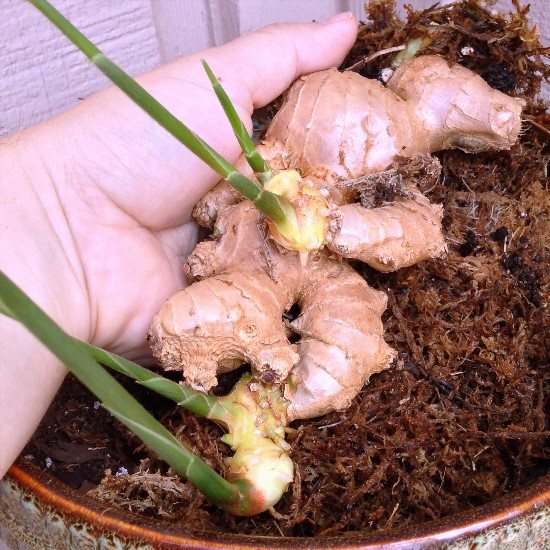

The soil is moderately moistened without flooding. It is better to use a spray bottle for this.Ginger sprouted, how to plant it correctly? The planting material is laid out on top of moss or soil, necessarily with the buds up.
Then they cover the material with soil or lay it with moss to a depth of two or three centimeters.
The containers are installed in a place protected from drafts and from direct sunlight. It is important not only to know how to plant a plant correctly. You also need to provide him with proper care.
Planting material
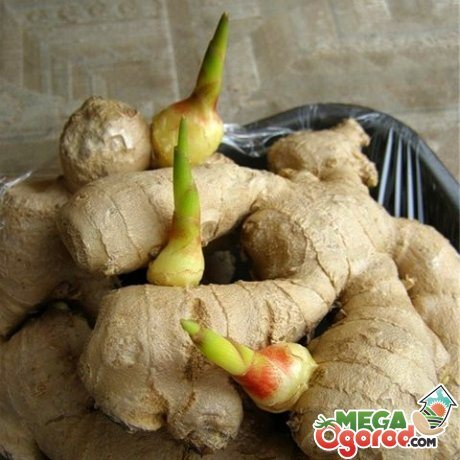

Growing ginger is not difficult, but few people dare to do it. Before planting, you should decide what the spice will be planted for:
- For decorative purposes, it is recommended to take a narrow and deep pot so that the root does not creep, and the plant stimulates the growth of aerial shoots.
- For growing for harvesting from green shoots and rhizomes, it is more advisable to take a medium-sized, wide and low flowerpot. The roots are localized mainly on the surface. Only underdeveloped adventitious roots go deep into the container.
For planting a tuber, it is recommended to prepare a substrate (1: 1: 1) from garden soil, leaf humus, sand. This composition can be mixed with soluble granules of complex fertilizer for rhizomes.
Top dressing will create the necessary conditions for the formation of strong and developed roots.
If it is not possible to make soil on your own, it is worth purchasing citrus soil in a specialized store. It is soft, loose, breathable and contains essential ingredients for healthy growth.
At the bottom of the pot, drainage (expanded clay or river gravel) must be laid out - at least 2-3 cm thick. The earth is poured next. It should not be tamped down. A tuber is laid out on top and slightly pressed into the soil by 1-2 cm, no more. The phalanges should be placed horizontally with the kidneys on top. Favorable temperature for germination of the first buds is +25. When lowered to +18, the kidneys fall asleep. Thus, each type of cultivation requires its own pot. There are different ways to stimulate a shrub for color or for root growth.
Temperature and lighting
When the ginger has sprouted, how to plant it optimally? The best time for this work is considered to be the period from late winter to mid-spring. At this time, the room temperature should be maintained at 18-20 degrees. It should not be allowed to decrease, otherwise the planted ginger will "fall asleep" and will not sprout. In summer, during active growth, the temperature should be high enough, at the level of 28-32 degrees. This will have a good effect on the growth rate.
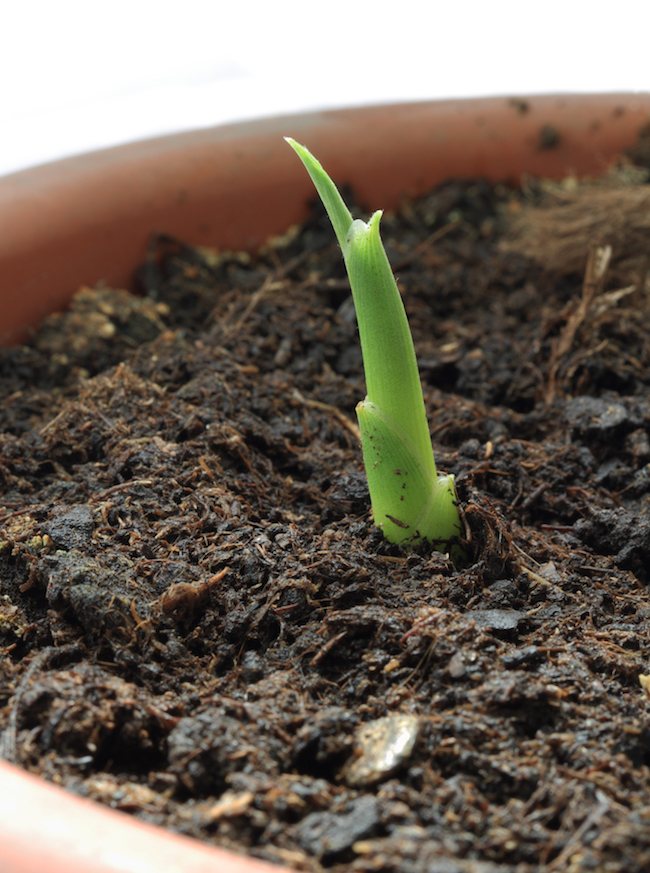

The main thing is to prevent sudden changes in temperature, which can be detrimental to the plant.
Ginger is a light-loving plant, but it categorically cannot stand direct sunlight, from which burns are possible on the leaves. Therefore, it is better to place the container with the plant on the east or west windows.
Storing ginger root
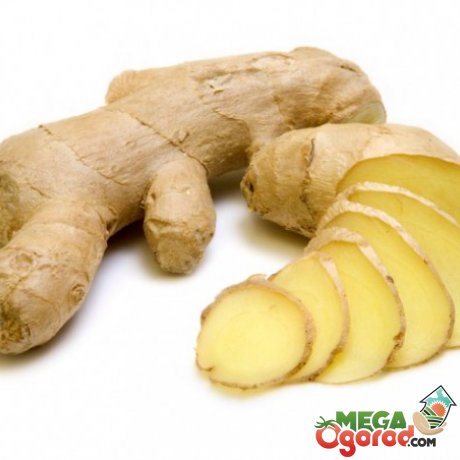

In early September, the leaves on the stems begin to turn yellow, dry up and fall off. If the flower was grown for decorative purposes, then cutting the flowers is not worth it. Do not dig up the tuber. For the winter, during the dormant period, the flowerpot with the bush is placed in cool conditions, thereby providing rest. Watering is limited - once a month, not fed. After a dormant period, the grass will come to life again. At the beginning of spring, the intake of moisture increases.
Top dressing is applied with a triple fertilizer containing potassium, magnesium and phosphate (Nitroammofosk). Otherwise, when the root is grown for food use, it is dug up. "Phalanges" are cleaned from the remnants of the earth, washed.
Dry in a sunny place within 3 days.
From horned root crops fried in the sun, several segments are laid for further reproduction.They should be placed in a cool place at a temperature of +50 C, for example, a cellar, the lower compartment for storing vegetables in the refrigerator. The main thing is to wrap it in paper.
The resulting product can be chopped or cut into chips. The prepared material is used both dried (placed in a dark dry container - an iron tea can) and frozen - poured into a dry plastic container. In this state, ginger is stored for up to 6 months.
Watering and feeding
Ginger is a native of tropical rainforests, so it loves high air humidity. Therefore, it needs daily spraying, especially in the hot season. Spraying is stopped only in late autumn, when the leaves of the plant turn yellow. The soil also needs to be constantly kept moist, but in no case be flooded. Do not allow either the soil to dry out, or the stagnation of water in the sump. Water the plant with settled soft water at room temperature. After watering, the soil should be slightly loosened.
When the plant sprouts, you need to follow a few simple steps so that it pleases with excellent roots or a beautiful appearance. After the first shoots appear, young ginger is fed with mullein solution every ten or twelve days. Organic fertilizers that improve root growth should be alternated with potash fertilizers. They promote lush flowering.
A plant planted to obtain a root must be pruned periodically in order to direct all its forces not to the leaves, but to the formation of the tuber. Plants planted for decorative purposes do not need pruning.
Diseases and pests
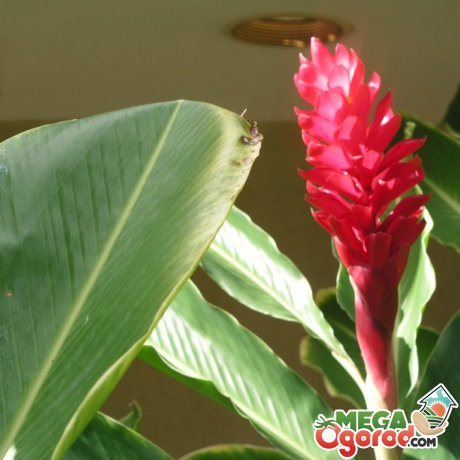

In most cases, ginger is resistant to various kinds of diseases and pests. Winter is a dangerous time. Air dried out by batteries provokes drying out of the soil and the appearance of a spider mite.
When a harmful insect appears, the leaves are covered with small dots of a yellow tint, which quickly increase in size. The bush becomes pale, lifeless. Failure to take control measures will provoke a disastrous outcome.
Pest control methods:
- To eradicate the problem, increase watering and spraying. Place a pot in a filled pan to saturate the earth with moisture. Wash the greens under running water, wrap the soil with plastic at this moment. After water procedures, without letting dry, it is recommended to wrap the leaves in a bag and leave it for a week. In high humidity, insects will die, which cannot be said about their eggs.
- It is possible to completely eradicate both the instigator of the disease and its eggs with the help of chemical treatment. This is the fastest and most effective way to get rid of a tick. Spraying is carried out once a week.
Timely detected foreign insects can lead to the death of the entire bush. It is recommended to urgently take measures to destroy harmful inhabitants.
Allergic reaction
The appearance of characteristic spots and itching indicates an allergic reaction to ginger. Intolerance can be caused by the essential oil content of ginger. It is necessary to limit contact with the plant and take an antihistamine.
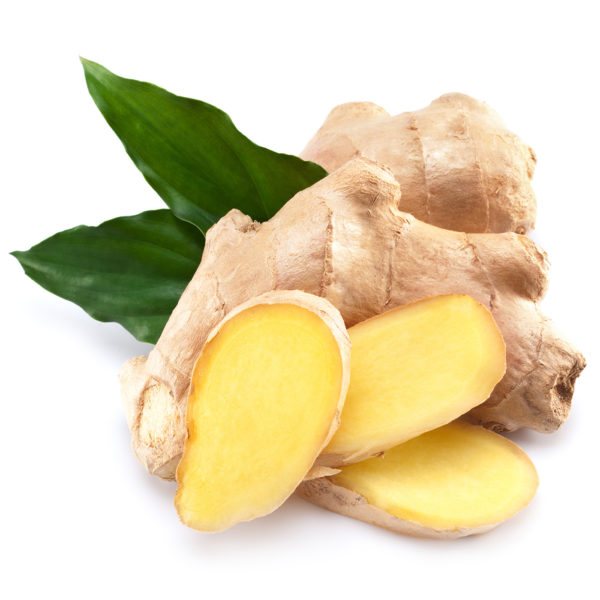

High levels of essential oils can cause allergic reactions.
Photo
Next, you can see a photo of the seeds, root tuber and sprouted ginger root shop.
Harvesting and storage
In the climate of southern countries, where the air temperature is high all year round, the ripening of ginger fruits is indicated by their drying and yellowing leaves, which gradually begin to fade. But, despite the drying out leaves, the root system of the plant still remains strong and succulent, as it has managed to accumulate a lot of strength. This ginger has a rich and pungent taste. But it is not necessary to dig up fully ripe roots, because young rhizomes have a special taste, characterized by their tenderness.
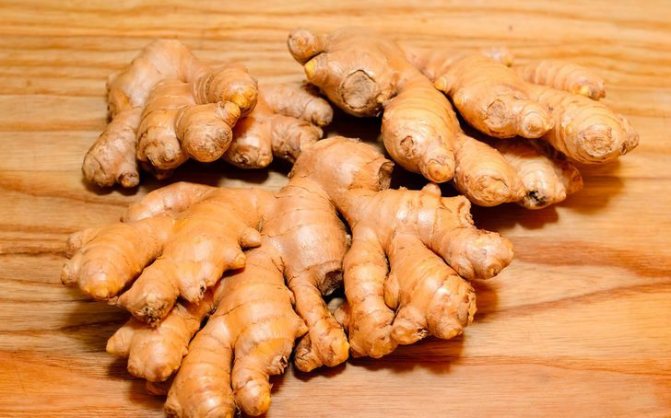

Storing ginger
For example, residents of Thailand start harvesting in the second half of November, but if we talk about the regions of Russia, people begin to collect ginger roots when the rhizome can no longer grow due to unfavorable weather conditions. In addition to the roots, small sprouts of ginger, which in appearance resemble a regular pencil, can also be used for food. Only young sprouts are used, because their taste is a bit like the tangy tangerine.
To store ginger, you need a cellar where the temperature does not drop below + 4 ° C. This applies to storage without a refrigerator. If there is one in your dacha, then, of course, the root must be kept in it. Just set it to the right temperature. It is advisable to place the ginger in a paper bag or simply wrap it in newspaper before putting it in the refrigerator.
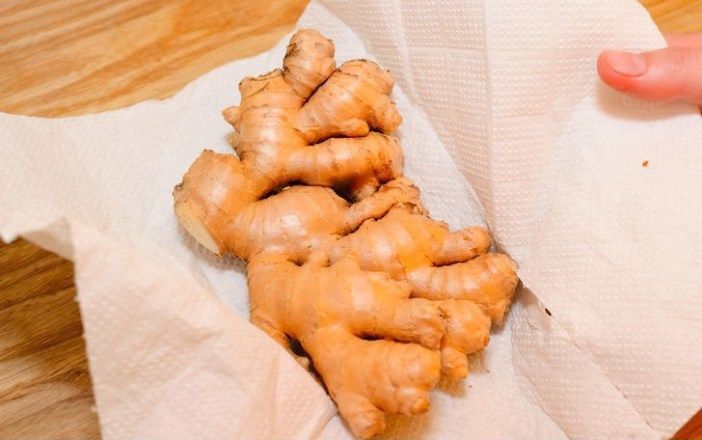

Ginger wrapped in paper


A paper bag will work too
Plant development and formation
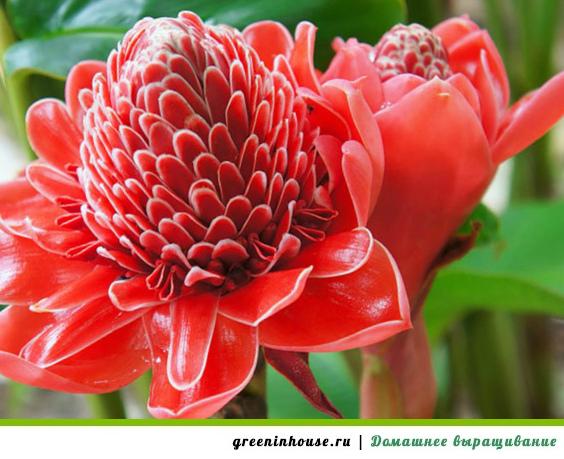

Ginger flower
Ginger is a perennial herb. Lanceolate leaves encircle a straight shoot, up to 1-1.5 m long. Flowers collected in ears appear on the plant after 3 years at the very top. Inflorescences with yellow-green flowers look unusual. Therefore, if flowering is planned, the upper parts of the shoot must be preserved. Special techniques for the formation of a plant are not used, but if it is required to obtain a developed rhizome, then the extra young shoots with a strong thickening are removed. Rhizomes are either used in the fall or left to winter. In winter, the plant continues to grow, but at low temperatures it completely discards all leaves and resumes development only in spring. In the latter case, it is necessary to preserve the root without damage, providing rare watering.
Observing all the conditions and cyclical development, you can provide yourself with a harvest of ginger and prepare many tasty and healthy products.
Care rules
After the ascent of green shoots, the plant needs competent care. Let's list the main components:
- The main thing is to avoid overdrying. Water the ginger frequently, but in small portions.
- Maintain high humidity near the plant or spray it with a spray bottle 2-3 times a day.
- Loosen the soil after each watering.
- Keep the pot in partial shade.
- Every spring and summer (active growth phases), it is necessary to provide top dressing with liquid fertilizers at a frequency of two weeks.
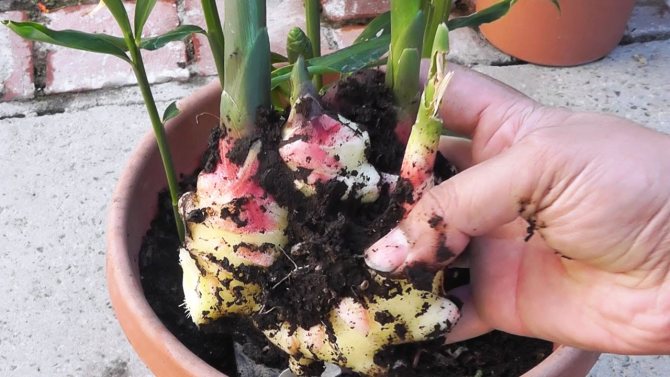

Proper care is the key to the health of ginger
Girls! Look at this disgrace))) Before the trip to the sea, I bought a ginger root in the supermarket, did not have time to do anything with it, left, leaving it on the windowsill, in a bag. Now I remembered ... I thought to take it and rub it ... And how to rub it, it sprouted! Now the hand does not rise to eat it somewhere))) He is clearly alive, my root) I had to look for information on the Internet that I had no idea about. Maybe it will come in handy for you too? Below I add a list of all the beneficial properties of ginger, root without sprouts) Do you know what surprises me most? Everyone writes that ginger sprouts in the spring ... But now is a completely different time of the year)!
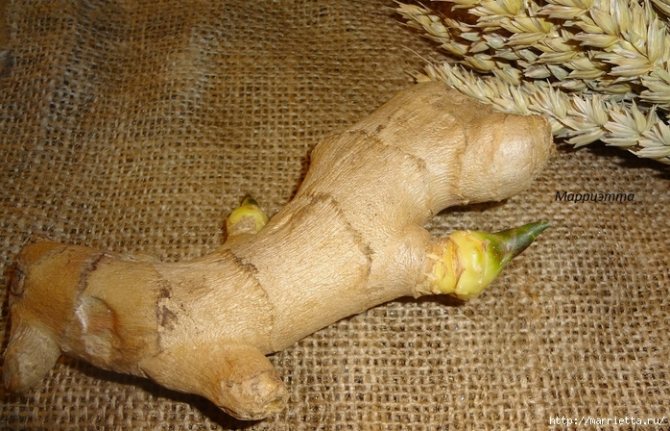

And here is what can grow, blossom from the root:
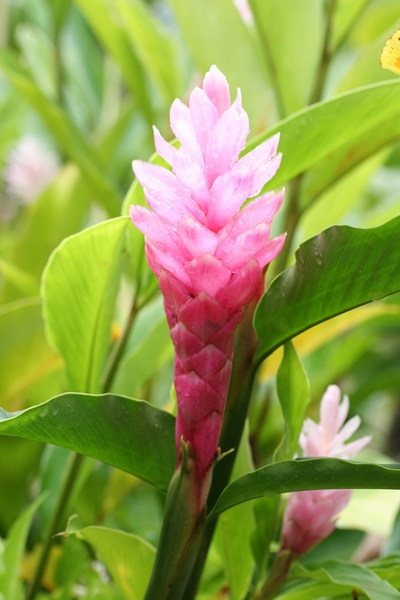

And I bought ginger root for many self-medication purposes, in particular for weight loss and for the treatment of joints. Ginger helps with osteoarthritis, heals knee joints. In order to feel the effect, it must be eaten constantly for a long time, every day adding to food or preparing tea. There is a whole list of joint diseases, symptoms and all traditional methods of treatment are described.
So, what properties does ginger have?
The qualities of ginger are due to its chemical composition, it is a really effective weight loss remedy. Fresh ginger is processed and sold dry, although fresh root is also available. When dried, the yield of the product is less than 25% of the original weight, the length of the dried roots is up to 12 cm, and the thickness is up to 2 cm.Black ginger has a brighter and more pungent taste than white ginger, since some of the substances are lost during processing of white ginger. The color of the roots at the fracture should be yellow, the brighter the color, the more mature and old the root. The aroma of ginger determines its essential oil, which makes up 3% of the dry product weight. This smell is spicy, strong, exotic, very pleasant. The characteristic pungency of the roots is caused by gingerol, a substance from the group of phenols that contains ginger, this taste is widely used in cooking. Fresh ginger is sweetish and tart, sweetness comes from a large amount of sugars.
Ginger, composition
The nutritional value of the roots is insignificant, since it is still a seasoning and it is not eaten in kilograms, no matter how many calories there are in ginger, because when used, the count goes to grams, especially since fresh ginger has only 15 kcal per 100 grams of product. We brew tea, add it to food, and calculating the calories in it is the same as counting them in black hot pepper. Much more important are other substances that ginger contains, vitamins, minerals, essential oils. Ginger, the chemical composition of which has been well studied, has the following characteristics: - essential oil 1.2-3% (its main constituents are 70% zingiberen, 1.5% girgenol, etc.) - all essential amino acids such as asparagine, tryptophan, valine, etc. - minerals, phosphorus, potassium, silicon, magnesium, iron, chromium, manganese, etc. - vitamins, vitamin C, B1, B2, B, A, etc. - organic acids, linoleic, oleic, nicotinic, caprylic, and others - fats - fiber (cellulose) - fructose and sucrose The root of ginger, the composition of which has determined its medicinal properties, has found application not only in Eastern, Tibetan medicine, but also in traditional medicine, nutritionists all over the world recommend using it for weight loss. Girgenol is a natural metabolic stimulant and it contributes to weight loss.
How to choose and buy ginger?
Eating ginger is not a common habit of most of the population, many do not even know how to eat its root, and whether it is generally possible to eat it, how to cook it, where it is added, and what to do with the purchased ginger. And the stores have it all. You can choose a fresh root, with a smooth thin skin, juicy and almost without fibers, or you can buy dry ginger powder, in special stores you can buy ready-made pickled, candied ginger and delight yourself and your loved ones with it. The cost of fresh seasoning is about $ 3 per kilogram, given that only 20 grams are added to food, almost everyone can afford to buy it, and of course, use it for weight loss and their own health. We do not recommend buying a ready-made pickled root, you cannot be sure of its quality, but choosing a fresh, smooth, large root is a pleasure, especially since there are a thousand and one ways to cook it. Ginger in food is primarily a seasoning, grated, dry, finely chopped fresh, pickled juice in the form of juice, nothing can be substituted for it in dishes. You can also eat raw ginger by adding it to salads.
How to peel ginger?
Any home-made ginger means you have to peel it first if you bought it fresh. If you buy white dry ginger, it is already peeled, black dry ginger is dried entirely, and the skin of ginger is richest in aromatic and essential oils, therefore it is more pungent. Of course, the dry root is not cleaned. How to peel ginger? The wrong root shape prevents you from using a regular vegetable peeler, because then you will cut too much. It can be peeled with a knife in the same way as carrots, but if you process a lot at once, this will create certain difficulties. It can be done much easier, for this ... an ordinary tablespoon will do. The peel of ginger peels off very easily, which means that it is not difficult to peel it, just scrubbing it with a spoon, turning it inward.It is necessary to peel the ginger until the skin is completely removed, after which the shape of the root will not change, and now it can be used for food.
How to use fresh ginger?
There are several ways to grind it, depending on the recipe. If you need a grated root, use a regular grater. The ginger grater is fine. Usually, when rubbing, a lot of juice is released, and fibers remain, all this can also be used for food. If you need to cut the ginger, cut it first along the fibers into thin slices, the thinner the better, then these slices, folding in a bundle, cut again lengthwise. You will have straws that you have already cut into cubes. If you want to grind the ginger for pickling, you will need thin petals. They can be obtained using a vegetable cutter. Ginger root in cooking is often used in dry form, while it must be ground. Traditionally, in order to dry the ginger root, it is laid out in the sun, and then you can grind it in a regular coffee grinder.
How to grow ginger at home?
Ginger is an unpretentious plant, and can successfully grow in your home or country house if you live in central Russia. Growing ginger at home is easy, all you need to do is find fresh live ginger root on the market. It is quite often that the hostess discovers that the fresh ginger that she kept has sprouted in the spring, the vitality of this plant is very high, and you can achieve success without much difficulty. The conditions for growing ginger are moist, fertile soil, and a warm climate, he does not need anything else. If you have harsh climatic conditions, it is unlikely that it will work to grow ginger in your country house, but at home it can be grown almost on an industrial scale, if you have enough free space, nevertheless this grass grows quite high, 1-1.5 meters in height. The place where ginger is grown should have good lighting, but direct sunlight is not needed, it does not like this plant and drafts, so it can be successfully grown in an ordinary greenhouse.
Ginger growing at home
If you accidentally sprout ginger root, do not throw it away. Ginger in a pot can be a decoration for your home, a supplier of herbs to the table, and just a ginger flower is beautiful. Planting ginger is optimal in the spring months, in March - April. At this time, fresh roots are ready to germinate at any time, since nature has laid the start of the growth of this plant at this very time. To grow ginger from a root that has not sprouted on its own, it must be cut into pieces no more than 2-2.5 cm in size, each piece must have 2-3 growth points. To plant ginger at home, you need not quite a pot. This seasoning has a wide but short root system, almost like a potato, which means that the container should not be very deep, but wide. The soil in which you plan to plant ginger must be suitable for vegetable crops or seedlings, it can be purchased at a flower shop. In addition, you will need expanded clay for drainage. Drainage is poured onto the bottom of the container with a layer of 3-4 cm, ground is laid on top. Pieces of ginger root are placed in the moistened soil without deeply deepening, the sprouts or growth points should be directed upwards, and the root itself should be placed horizontally at a depth of 2-3 cm.Then the container is placed in a place protected from drafts and direct sunlight, after 7-10 days ginger will delight the first shoots. How to care for ginger? While the plant is young, actively growing and blooming, the soil must be kept moist, but not wet. You can use fresh sprouts in salads. By autumn, in October - November, the leaves will begin to turn yellow and wither, the aboveground part of the ginger will die, and there will already be large edible rhizomes in the ground. Now the container cannot be watered, later you can dig out the ginger and use it as directed.
Growing ginger in the country
Is it possible to plant ginger root in the country? Of course, you can, moreover, you can grow it in large quantities. Ginger Planting and Care There are two planting options. If you live in the Krasnodar Territory, Crimea, the climate will allow you to successfully grow ginger right on the street. The root of ginger, which is planned to be grown in ordinary beds on the street, is planted in the spring, the place where ginger grows should be shaded, this grass does not like direct sun. To plant ginger in the greenhouse, just prepare an empty spot. In both cases, the soil is the same as for other vegetable crops. Before planting, the ginger root is cut, each piece must have a growing point. We deepen the pieces at a short distance from each other, we moisten the soil daily throughout the growing season. Caring for ginger is not difficult, and requires only attention to ensure that the soil does not dry out, the rhizomes will ripen by autumn, and the plants themselves will begin to hibernate, the grass will dry out and turn yellow. Harvesting ginger Unlike growing at home, ginger root when grown in the country cannot be left in the ground, you will not be able to control the humidity and temperature. So, it must be dug up and dried. In regions where ginger is grown on an industrial scale, it is dried in the sun; in our conditions, the rhizomes can be simply marinated.
How to store ginger?
The shelf life of ginger depends on how it is processed. If it's fresh ginger, you won't be able to store it for more than a week, dry and pickled ginger will last much longer. However, the shelf life of ginger can be extended by doing simple manipulations with it. How to properly store ginger in the refrigerator? Fresh ginger can wilt easily, make sure the roots are clean and not rotting and wrap them in plastic wrap. Store on the bottom shelf in the vegetable compartment. The frequent recommendation to keep it in the freezer for months is only suitable when you do not intend to lose weight with the help of this product or to be treated with it. Ginger, stored at subzero temperatures, will retain only its taste and smell, but not its healing properties. It becomes just a seasoning. There is another way to keep ginger root in the refrigerator. It must be well cleaned, rinsed and filled with clean water, you can also use table wine. Unfortunately, this ginger is also suitable only for cooking. If the root is boiled in sugar syrup (water and sugar 1: 1), it can also be stored in the refrigerator for a long time. How to store ginger if it is dry? The dried roots are stored for a long time, up to six months, at room temperature in a regular paper bag. And ginger powder in a sealed glass container at room temperature in a dark place will not lose its properties for several months. If you are using pickled ginger, refrigerating it will extend its life by up to 1-3 months. The shelf life of pickled ginger largely depends on the container in which you store it, use only glass or ceramics, iron, aluminum dishes will quickly oxidize. The shelf life of pickled ginger also depends on how it was pickled, the less vinegar, the less it is stored.
Properties of ginger
As a medicinal plant, ginger has been used for thousands of years. For us, it is important for losing weight, but still it is worth knowing how it affects other organs and systems, and of course, you need to know about contraindications to its use. Here you will find not only everything about ginger, but also useful recipes that will be useful to you in the future. Folk recipes with ginger recommend its use in the following conditions: - It is believed that the effect of ginger on the body is very multifaceted.It has a carminative, bactericidal, choleretic, antispasmodic, anti-inflammatory, analgesic, diaphoretic and healing effect. - Taking ginger is useful for strengthening the immune system and fighting worms, it is a strong antioxidant and sedative. - I found ginger in cooking, food is absorbed better with it and gets a special taste. - Ginger is believed to be beneficial for gastrointestinal health. Appetite increases, juice secretion increases. There are recommendations for taking ginger for peptic ulcer disease, but still this is not true, with this disease there is already high acidity. - Appointment of ginger for colds helps to cope with sore throat, cough, runny nose and sinusitis. - Ginger is useful if you have allergies, it helps with bronchial asthma and skin diseases. - There are recipes for the treatment of intestinal ginger, biliary colic, abdominal pain. Be careful, below is why. - Ginger is taken as a medicine for poisoning, including mushrooms, flatulence. - Healing ginger can lower serum cholesterol levels. - Ginger is used as a laxative with a very mild effect on the body. - If you take ginger, it will also be beneficial for joint diseases, arthritis and arthrosis, edema, muscle pain and sprains. - Another useful property of ginger is the ability of its peel to have a diuretic effect, which helps to get rid of edema. At the same time, the production of saliva is stimulated. - There was a use of ginger in medicine and to relieve pain during menstruation, but one must take into account the risk of increased menstrual bleeding. - The tonic qualities of the root of this plant help to cope with fatigue and stress, restore vitality. - It is believed that ginger has a positive effect on paralysis and jaundice (we do not recommend experimenting). - Taking ginger has a stimulating effect on the thyroid gland. It is useful for hypothyroidism and obesity. - It is impossible to deny the usefulness of ginger for blood vessels, especially for the vessels of the brain. Thanks to the improvement of cerebral circulation, headaches disappear, and memory and learning ability improve. - The benefits of ginger root in the fight against aging are known, it has an excellent effect on the reproductive system and hormones of both men and women, increasing fertility (the ability to conceive), improving potency in men. - Ginger heals the general slagging of the body, getting rid of toxins and toxins that accumulate in the body vents over the years. - There are a thousand and one ways to use ginger root for weight loss. The fact is that it removes excess fluid, increases the activity of the thyroid gland, which is responsible for the metabolic rate, and thereby contributes to weight loss and rapid weight loss. - Tablets and capsules with ginger are used against motion sickness, nausea and dizziness disappear. The same property is useful in early pregnancy with toxicosis. - Ginger is also used to prevent cancer. Properties that prevent cancer are due to the antioxidant effect that protects cells. - Healing ginger can relieve bad breath and many dental problems if you chew it fresh after eating. - Ginger is combined with many other medicinal plants, enhancing their healing effect, which is widely used in teas and teas. - Ginger, or rather its oil, in medicine for aromatherapy, he found application in cosmetology. So, we are treated with ginger.
Useful properties of ginger
In Tibetan medicine, the healing properties of ginger are characterized as hot, this remedy stimulates and warms the body. Medicinal ginger is used to treat many diseases, but not all recipes are equally safe. Ginger for colds Ginger root for colds will become an indispensable aid in treatment, recipes can be used for children from the age of three.Of course, the most commonly used cough suppressant is ginger, below are the most common recipes: Wet Cough: Add a third of a teaspoon of dry ginger and a spoonful of honey to a glass of hot milk. If you're comfortable with the taste of turmeric, you can drop it at the tip of your knife too. Drink 3 times a day, you can give it to children. Dry cough: grate fresh ginger and squeeze the juice, mix it in equal proportions with lemon juice and honey. This mixture is most pleasant to use as tea, diluting a teaspoon with boiling water and taking it 3 times a day. Similarly, you can use ginger for bronchitis. You can also use dry ginger for a cough, the recipe requires the use of Egyptian tea (fenugreek or another name for shambhala). In a Turk, boil 2 teaspoons of Egyptian tea in a glass of water for 10 minutes, then add a teaspoon of dry ginger powder and add honey to taste. Cough suppressant ginger can be inhaled. To do this, you need ginger essential oil, attention, do not use it in compressor or ultrasonic inhalers! The smell will remain forever, despite all filters, spoil the device. You only need 1-2 drops of oil, the procedure lasts 7-10 minutes It is better to give ginger for cough to children in the form of ginger tea, and in general, it should be used by adults for colds, at least 3 times a day. Tea is drunk in small sips, slowly, hot, to feel the ginger, the throat with such treatment very quickly returns to normal. If you have a stuffy nose, ginger can also help for a runny nose. Mix its fresh juice with sugar 1: 1, and put 1 drop into each nostril, in the same way ginger and sinusitis heals. Ginger should not be taken for colds, if you have a high fever, it will rise even higher! Ginger from worms The effect of ginger on parasites and worms has been noticed by Asians for a long time, not without reason that almost all recipes for rolls and sushi cannot do without this spice. However, if you are planning to cleanse your body with ginger, you need to be warned. Ginger against parasites is only suitable for prevention, but not for treatment. The reason is simple, if you really already have worms, feeling ginger, these parasites will not die, but only become more active, trying to get away from what bothers them. And they will travel throughout the body, cases are described when roundworms climbed into the respiratory tract and even into the maxillary sinuses, fleeing from herbal treatment. Peeling with ginger is dangerous! If there are worms, they need to get rid of with the help of a doctor. Ginger for Cancer You cannot cure cancer with ginger, it will not cure it, and you will waste time. It helps not to cure, but rather to prevent cancer, as it reduces the likelihood of inflammatory processes in the intestines. Of course, if you constantly use ginger, oncology is not necessarily guaranteed to bypass you, but the risk is significantly lower. Scientists have found that it is beneficial to regularly consume ginger for bowel cancer, but this is relevant only if you are completely healthy. Any illness of the intestines and stomach while taking ginger can worsen its course. Ginger for Diabetes Can Ginger for Diabetes? If you have diabetes mellitus and are taking anti-hypoglycemic drugs, ginger is contraindicated for you. Ginger for diabetics with type 1 diabetes, let's say after consulting a doctor. If you have type 2 diabetes mellitus, no heart disease, liver disease, gastrointestinal tract, hypertension, and your diabetes can be corrected only by diet, this plant can be your assistant in the fight against the disease. Losing weight is important for you, and that is what ginger will help you do. With diabetes, losing extra pounds can mean normalizing blood sugar, so pay attention to this seasoning, it is quite possible that it will save you both excess weight and diabetes. Ginger for hypertension With hypertension, ginger is contraindicated, as it increases blood pressure and increases heart rate.In some cases, ginger lowers blood pressure, and this should be taken into account if you are hypotensive. However, in some people, and in some conditions, ginger raises blood pressure very sharply, for example, it is possible in the second half of pregnancy. The way ginger affects blood pressure also depends on the drugs that you are taking, for example, when taking drugs for hypertension, their effect will be enhanced, and an overdose may occur. In general, ginger and pressure are a subtle combination, and if you have serious problems with this, it is better not to start using ginger without consulting your doctor, be careful. Ginger to Boost Immunity Ginger is believed to boost immunity, but let's be honest, if you freeze it, pickle it, boil it - most of the vitamins will be lost. For immunity, ginger root should only be used fresh, like fresh juice for salad dressing, for example. To do this, ginger must be grated and squeezed, the juice is used immediately, it cannot be stored. Ginger is useful for immunity due to phytoncides (they are contained in it in much the same way as in garlic), and vitamins, which are easily destroyed during processing and long storage. In tea, as a seasoning for dishes, it is ineffective, so if you really take it for this purpose, then only the freshest. Do not give ginger to children under 3 years old, even to increase immunity, it is contraindicated for them. Ginger for Digestion Ginger can be good as well as bad for digestion. Ginger for medicinal purposes in diseases of the gastrointestinal tract cannot always be taken safely. This is a rather spicy spice that greatly irritates the stomach, therefore, there are contraindications. Ginger for the stomach is useful if you have hypoacid gastritis, then it stimulates the formation of gastric juice, but if you have ulcers, then it is categorically impossible to eat, although you can find recommendations for use. Similarly, ginger is prohibited for the intestines in the presence of colitis. Thanks to the stimulating effect, it is possible to use ginger for motion sickness and nausea, including in pregnant women in the early stages. Ginger for hemorrhoids will irritate the hemorrhoids and cause an exacerbation, so it is also better not to take it with this disease. Ginger for the liver can be both good and bad. It causes increased bile secretion, so if you have a lazy gallbladder this is good and will improve the digestion of food. However, if you have calculous cholecystitis, ginger can bring you to the operating table, stones will begin to flow with bile and cause hepatic colic. With cholecystitis, ginger is not worth eating, even if there are no stones, it can increase inflammation. If you have pancreatitis, ginger is not desirable for you and is dangerous, it can exacerbate the disease, since when you eat ginger, the pancreas increases its secretion. In general, the use of ginger root has a beneficial effect on the gastrointestinal tract, it stimulates digestion, and has a slight laxative effect. However, even if you are completely healthy, never consume ginger on an empty stomach or in large quantities. Using ginger root in your meals should also be smart. If you add it at the beginning of cooking, the beneficial qualities and flavor will go away, but the irritating effect will remain, so add it at the very end. Ginger and cholesterol Treatment with ginger of cardiovascular diseases is possible in the absence of hypertension and heart disease. Many people take ginger to thin the blood; indeed, it affects clotting and cholesterol metabolism. The people say so about it, it thins the blood. In general, ginger has a beneficial effect on metabolism, increasing fat burning and reducing the amount of bad cholesterol in the blood, which means that if you constantly take ginger, the vessels will be clear of atherosclerotic plaques.But still take into account the fact that it is still more a means of prevention, rather than treatment of a neglected disease. Ginger for a toothache If you have a toothache and cannot see a doctor right now, you can try to soothe a toothache with ginger. To do this, chew a small piece of fresh ginger root and apply it to the aching tooth (gum). This ginger compress will soothe the pain. Ginger and joints Ginger helps with osteoarthritis, heals knee joints. In order to feel the effect, it must be eaten constantly for a long time, every day adding to food or preparing tea. General advice on ginger treatment The very root that we buy in the store has a second name, ginger. This already suggests that the medicinal properties of ginger are recognized by medicine. Now even the medicine ginger is being produced, the tablets are intended for the treatment of motion sickness and motion sickness. How to use ginger for treatment? Most recipes require fresh ginger; dried ginger also retains its beneficial properties for a long time. Fortunately, the question of where to buy fresh ginger is no longer relevant, it is sold in any supermarket. Frozen ginger is suitable only for food, and if pickled ginger is used, its useful properties are worse than that of fresh. No matter how you use ginger, the dosage of fresh root should not exceed 10 grams per day, dried - 2 grams, otherwise poisoning is possible.
Ginger for men
Ginger for men is a very valuable product, one might even say irreplaceable. Its most important action from a masculine point of view is the effect on potency and masculine strength. These amazing benefits of ginger for men were noticed in the east, and ginger tea was a harem drink, and ginger was primarily intended for potency. Ginger is an aphrodisiac that enhances sex drive. Its subtle aroma itself excites desires, and the essential oil causes blood flow to the small pelvis, including the genitals. This causes light arousal and persistent erection, prevention of prostatitis. Of course, if you have real impotence, ginger is unlikely to help here, but the regular use of this root definitely has a great effect on male sexuality. It is important not only that ginger increases potency, it acts at the level of the nervous system, it is a warming product that makes a person vigorous and energetic, helps to cope with fatigue, and increases self-confidence. For many, it works more strongly than even coffee. The influence of ginger on potency is in many ways not only a banal rush of blood to a famous place, but also simply a restoration of strength and desires. And that's not all that ginger is good for for men. Its interaction with alcohol and its ability to relieve hangovers is interesting. It is not for nothing that many alcoholic drinks are made with the addition of ginger, for example, ginger beer or ginger moonshine. If you consume ginger and alcohol at the same time, then this root will protect the liver from the negative effects of the drink, and there will be no hangover. Ginger relieves hangover by eliminating symptoms such as nausea and stomach discomfort. Ginger root for men can also come in handy in the fight against smoking. Smoking ginger is used in the form of tea, it promotes the rapid elimination of toxins. Of course, it is not enough to quit smoking, but if you want to do this, it will be easier to get rid of the addiction. The benefits of ginger and its multifaceted effects on the body are a sufficient reason for this spice to become a constant companion to your table.
Ginger for women
The beneficial properties of ginger for women are widely used, especially during pregnancy. Few people do not know that ginger helps against nausea in the early stages, but still - in order: - In the form of tea, it is recommended to use ginger for infertility.It stimulates blood circulation in the pelvic area and helps to get rid of chronic inflammation, adhesions, which means that if you regularly drink ginger, conception will be more likely. - If you have fibroids, ginger, on the one hand, can help you by regulating the metabolism, and with it the hormonal background, which is so important in this disease, and harm you. The fact is that ginger can increase any bleeding, which means that if you have heavy periods, ginger cannot be used during this period, as with other gynecological bleeding. - Ginger for menopause can alleviate its manifestations, especially headaches and irritability. Everything that ginger is useful for women is due to its composition, which means that destructive freezing, cooking and pickling should also be avoided. Ginger during pregnancy Ginger during pregnancy is a well-known remedy for toxicosis. It perfectly relieves the nausea that accompanies early toxicosis, and helps to cope with the weakness, impaired well-being, which are so characteristic of this time. Ginger for pregnant women is also useful in that it contains all amino acids, many vitamins and is rich in minerals, which is important for the development of the child. During pregnancy, it is more correct to use fresh or dried ginger, they contain more beneficial substances. When using ginger, remember that pickled root can be too annoying during pregnancy and should not be eaten on an empty stomach. Ginger root during pregnancy can be either added to food or used as a tea. Pregnant women can use ginger only in the first trimester, starting from the second half it is better to refrain from this seasoning, because it can cause an increase in blood pressure and stimulate the heart muscle, which is dangerous in your condition. In addition, when using ginger during pregnancy, it is worth considering all other contraindications, for example, gastrointestinal diseases. Can ginger be breastfeeding? Ginger for a nursing mother can be, but very carefully. The fact is that it can cause an allergic reaction in a baby, which means that it should be used from the smallest doses, carefully observing the child's reaction. Ginger during lactation, or rather its essential oil, gives a special taste to milk, this may also not please the child. While breastfeeding, ginger has a moderate lactogonic effect, increasing the amount of breast milk, despite this, it is still not recommended for use during breastfeeding. If the baby leaves the breast because of the taste of this root, it will be very bad, everything that can provoke a rejection of hepatitis B should be eliminated from the diet of nursing.
Ginger and weight loss
If you decide to lose weight with ginger, be sure to take into account all the contraindications, this remedy is not suitable for everyone. Ginger really burns fat, you can painlessly lose up to 10 kg of excess weight within a year. How it works? Ginger as a weight loss aid affects the metabolism. In Asia, in Tibetan medicine, it is characterized as stimulating the blood, warming the body. Under the influence of the substances that make up it, the hormonal balance in the body changes, the thyroid gland works better, and its hormones stimulate the metabolism in the body (for example, with an excess of its hormones, thyrotoxicosis is observed - a disease in which people lose weight just to a state of exhaustion) ... Of course, you will not get thyrotoxicosis from ginger, but the general level of metabolism will increase significantly. This is not the only way ginger helps you lose weight. Astringent and spicy, when taken before meals, it significantly reduces appetite, you just do not want to eat much. And if used with the peel, it will have a diuretic effect, which will lead to a loss of kilograms due to excess fluid. Slimming ginger root can be used both dry and fresh.It is even believed that dry ground ginger for weight loss is better because it contains nutrients in a more concentrated form. Pickled ginger for weight loss is also suitable, but to a lesser extent. It does not make an appetite-reducing tea, but it can be used with other dishes and you will eat less food. Losing weight with the help of ginger is a long and slow process, it is more a matter of habit and lifestyle, because the effect does not appear immediately, it will take months. However, the good news is that this is always a very persistent and long-term result that lasts for many years. In the East, this spice is recommended to be consumed by obese people all the time, and you can also introduce it into your diet as an integral part of it.
How to lose weight with ginger?
First of all, the constant use of ginger tea contributes to weight loss, you need to drink it about two liters per day. On our website you can find many recipes for ginger tea, each of them has its own characteristics, and thanks to the variety of options, you will never get bored of it. You may find it difficult to prepare your own drinks every time, but in fact, you can brew them in a thermos all day at once, and use them ready-made. If you are preparing tea for weight loss, how to brew depends on the recipe, the general is the need to strain the tea after it has infused enough, otherwise you will get bored very quickly with a too cloying and spicy drink with a high concentration of substances. You can use both dry powder and roots, there are recipes for every taste. You can also use ginger for weight loss in a different way, see our website for recipes for drinks, salads and other delicacies. An excellent quality of this amazing plant is its compatibility with a large number of other medicinal herbs, which means the ability to expand the therapeutic effect of the consumed teas in accordance with the desired effect. Start drinking tea with very small amounts, half a glass, and gradually increase the amount. Drink warm, before meals, slowly, in small sips, then the effect of suppressing appetite will be more pronounced. Ginger certainly helps to lose weight, of course, if at the same time you do not start to lean on sweets and smoked meats.
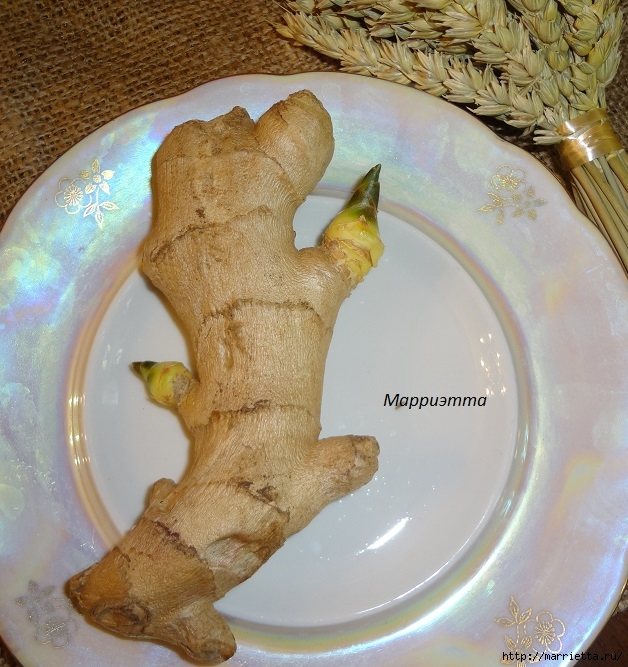

Inspired by Marrietta
Under what conditions can the rhizome give shoots
If you take any rhizome of ginger, then you can find "eyes" on it, the rudiments of shoots... From there, new shoots break through, similar to onion arrows. The plant itself is unpretentious to the environment, so even in the refrigerator there is a small chance that shoots will appear.
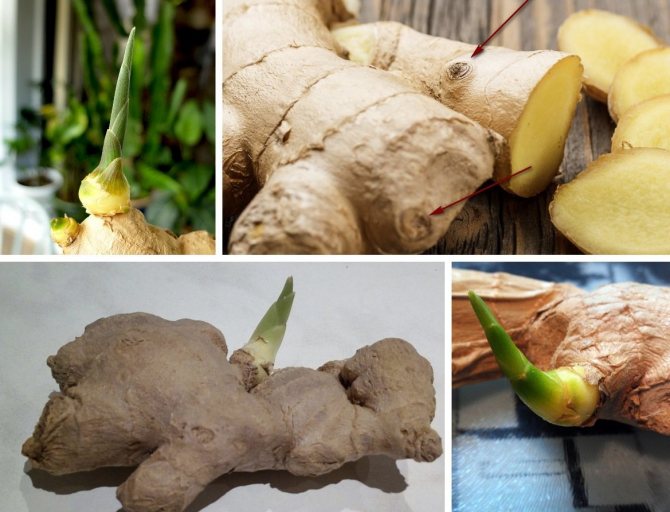

Comfortable conditions for germination will be warm, high humidity and plenty of light. It is important that the root itself is not too old. It is recommended to take the rhizomes fresh, firm, with a whole and silky skin, there should be no areas with mold and dryness. The healthy color is light gold.
Are there special varieties?
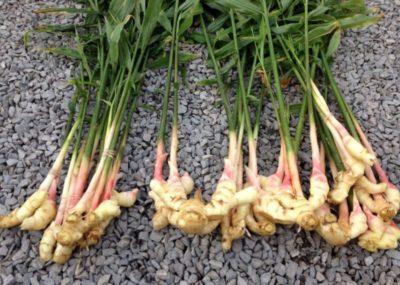

In Russia, ginger is bred mainly by amateurs; selection work with this crop is not carried out. There are several varieties of ginger, named for their place of origin. Most often on the shelves you can find the so-called Chinese ginger, originally from China and India, with large rhizomes and a relatively mild taste.
Japanese ginger rhizomes are finer and sharper in taste... Within the framework of both varieties, different varieties are distinguished, but only a narrow specialist can distinguish them by their appearance. There are no special varieties for the windowsill - neither in Russia nor abroad. Therefore, finding a varietal planting material, especially one intended specifically for cultivation in a pot, is a difficult task.
How to germinate?
Inventory:
- ceramic or glassware;
- container with warm water;
- sharp knife;
- crushed charcoal or activated carbon, or ash;
- potassium permanganate;
- low container;
- drainage material (for example, expanded clay or broken brick);
- ready-made soil for seedlings or a mixture of turf soil with humus (3: 2).
Germination process:
- Wash the rhizome with warm water and soak it for a week in a ceramic or glass container in a warm, damp place, for example, near a battery.
- Place it in warm water for several hours before planting.
- Disinfect the knife, cut the rhizome into pieces so that each of them has two eyes.
- Sprinkle the slices with charcoal or ash (when planting in a pot, you can treat them with potassium permanganate) and dry them.
- Place a drainage layer on the bottom of the container, pour soil on top.
- Lay out the prepared roots on its surface with the eyes up.
- Sprinkle them with a layer of soil 2-2.5 cm and pour well with warm water.
Possible problems
When growing ginger on a windowsill, you can face a number of problems. Most of them arise from care errors. Ginger can also suffer from pest attacks.
Yellowing of leaves
The problem is observed with a lack of batteries. This happens if you plant ginger in too poor soil or if you completely refuse to make additional fertilizing. To help the plant recover, it is necessary to apply fertilizers correctly and in a timely manner.
Fertilizers must be diluted in full accordance with the attached instructions. An excess of nutrition is no less harmful than a lack of it.
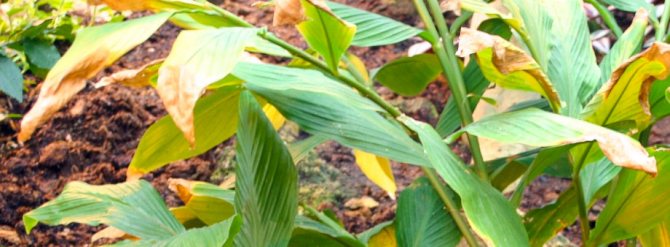

Drying out the edges and tips of the leaves
In most cases, the leaves begin to dry when the moisture level is insufficient. Ginger must be grown with constant spraying and abundant watering.
Brown spots on the leaves
Such damage to the leaves is observed when the plant receives sunburn. The ginger pot should be moved to a less sunny place or shaded. In the future, the plant should be more carefully looked after, timely applying all the necessary fertilizers. This will facilitate its rapid recovery.
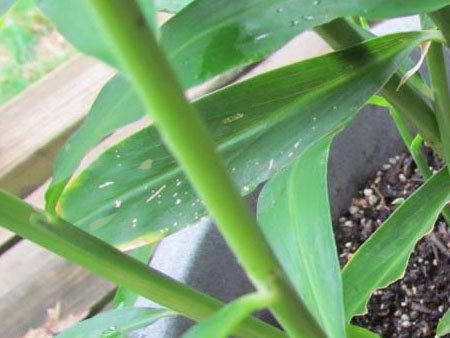

Sticky coating
When ginger is affected by a spider mite, a characteristic cobweb-like bloom appears on its leaves. This pest multiplies very quickly, quickly mastering all new plants, so you should act immediately. To combat spider mites, special preparations of acaricides are used.
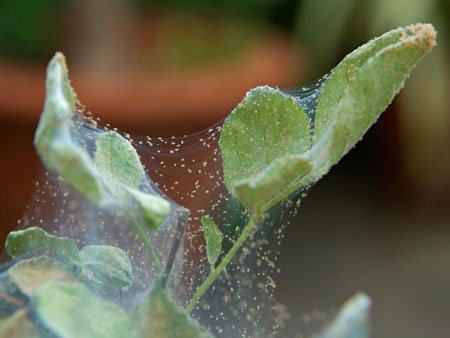

Due to physiological characteristics, conventional pest control agents are ineffective in the fight against spider mites.
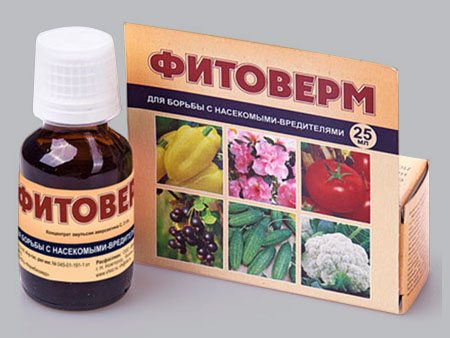

For processing, you can use "Aktellik" or "Fitoverm". They are bred in strict accordance with the attached annotations. After 10 days, the treatment must be repeated.
Ginger grown on the windowsill is 100% natural, environmentally friendly product. It can be used as a spice, for making fresh aromatic tea, or for medicinal purposes.
Today, ginger root can be purchased without any problems. How to grow ginger from the root at home? Can you grow store-bought ginger from root? Has this question never crossed your mind? It turns out that you can. It can be on the windowsill, or in the garden.
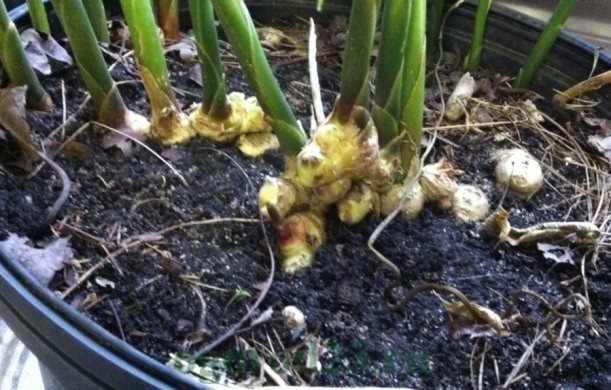

Thanks to its medicinal qualities and fat-burning effect, this healthy spicy-spicy tuber has become incredibly popular, by the way, deservedly so.
At home, ginger is planted in winter or early spring. The planting soil should be soft and loose so that the sprouts can easily make their way through it. At the initial stage of cultivation, you can feed the soil with potash fertilizers.
The pot should have a wide bottom, because the growth of the tuber is mainly in breadth. At the bottom of the container, you need to pour expanded clay drainage (4-5 cm), and then the soil. You can purchase special soil for growing vegetables in advance or mix in equal parts soil, turf, deciduous humus and sand.
Can this be avoided?
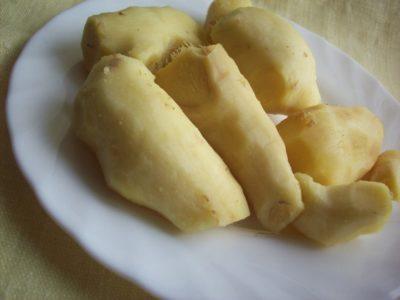

To avoid being faced with the plant-or-no-plant choice again, store your ginger properly. In the refrigerator, the likelihood of awakening shoots is reduced, but still remains.
To completely eliminate this possibility, peel the root from the skin (remove a very thin layer of the skin, since most of the valuable substances are concentrated under it), cut it into small pieces, fill it with water, put it in the refrigerator.
Store the cut rhizomes for a week. You can grate the ginger and freeze it, or pour it over with vodka. However, with any method of storage, some of the nutrients are destroyed, so it is safest to use ginger in the first days after purchase.

